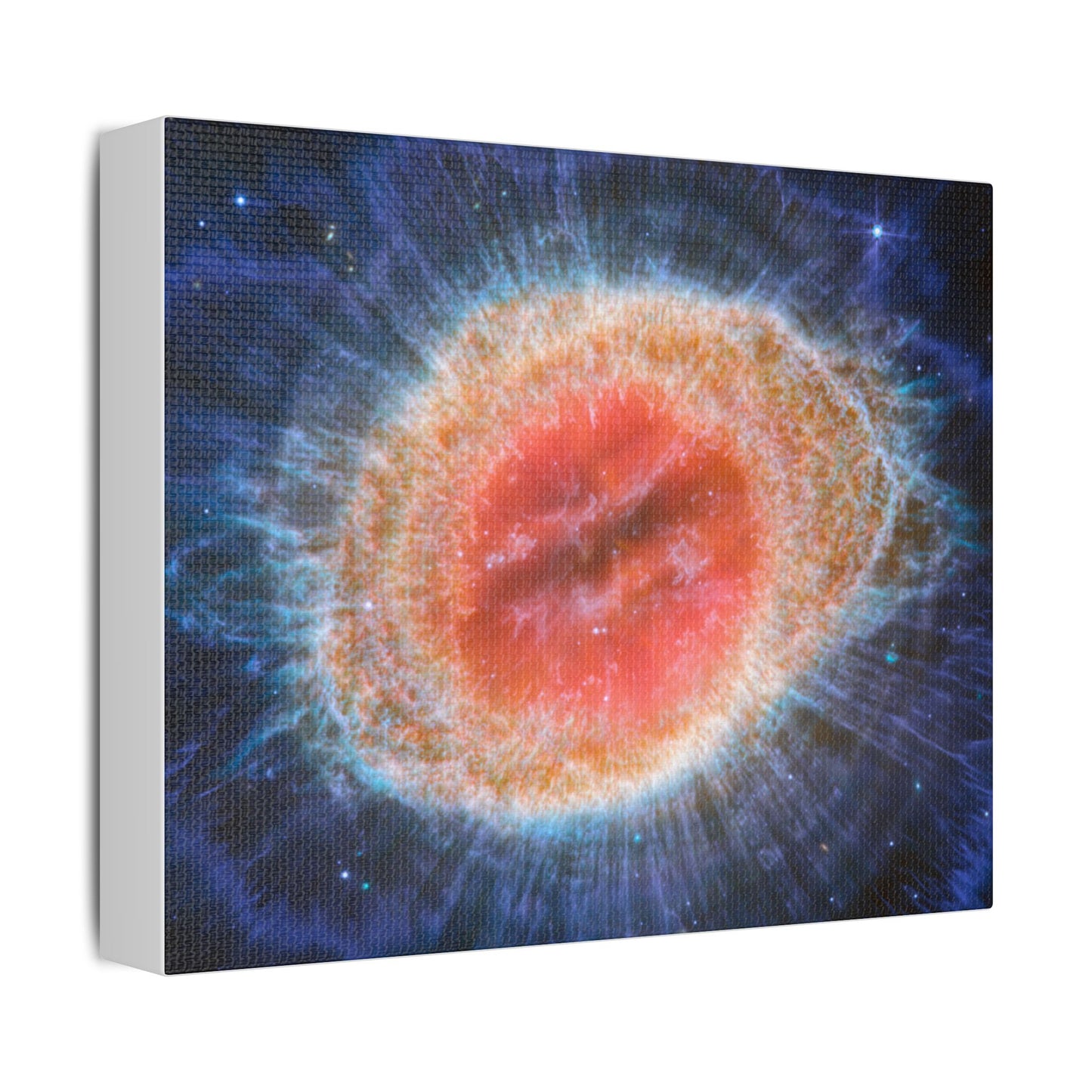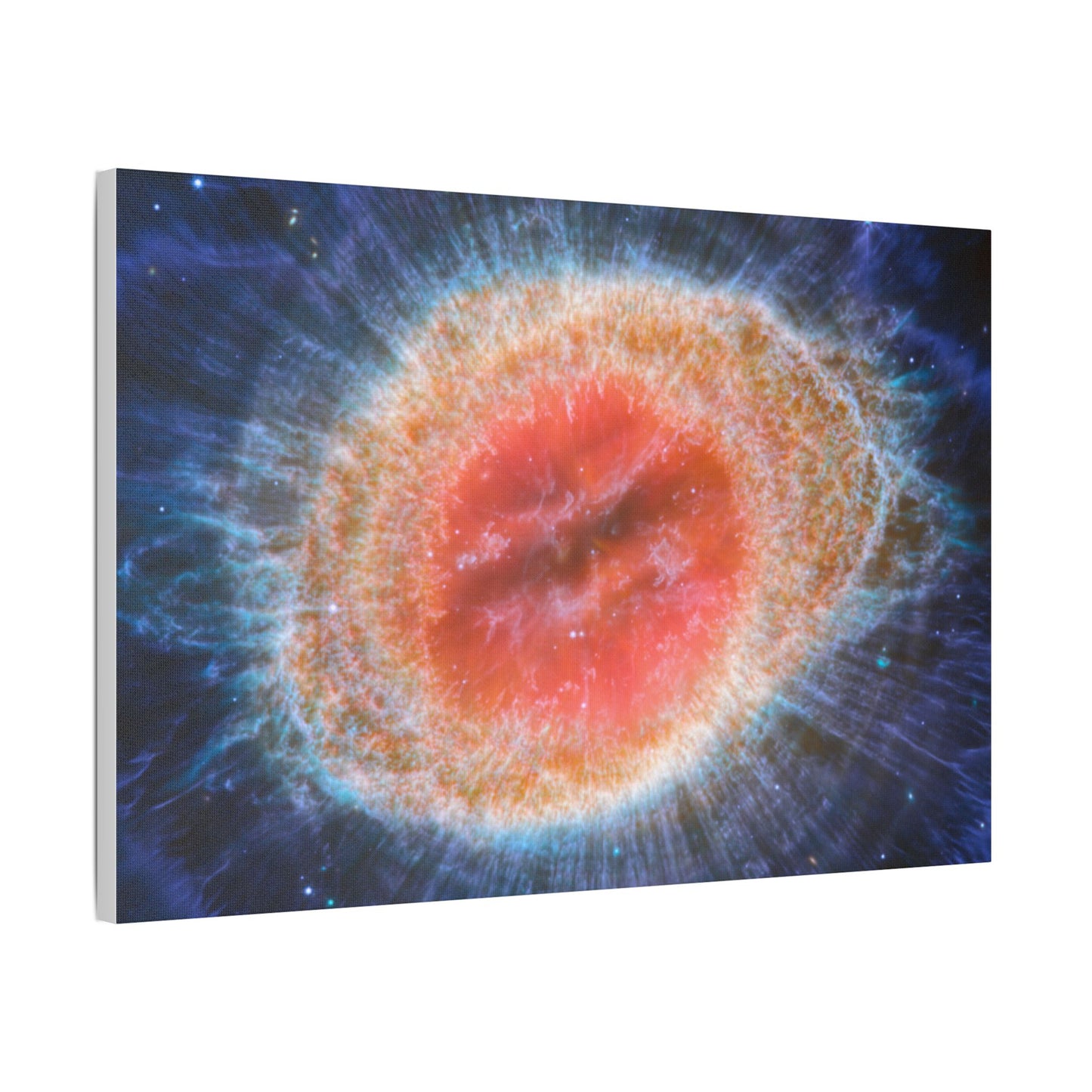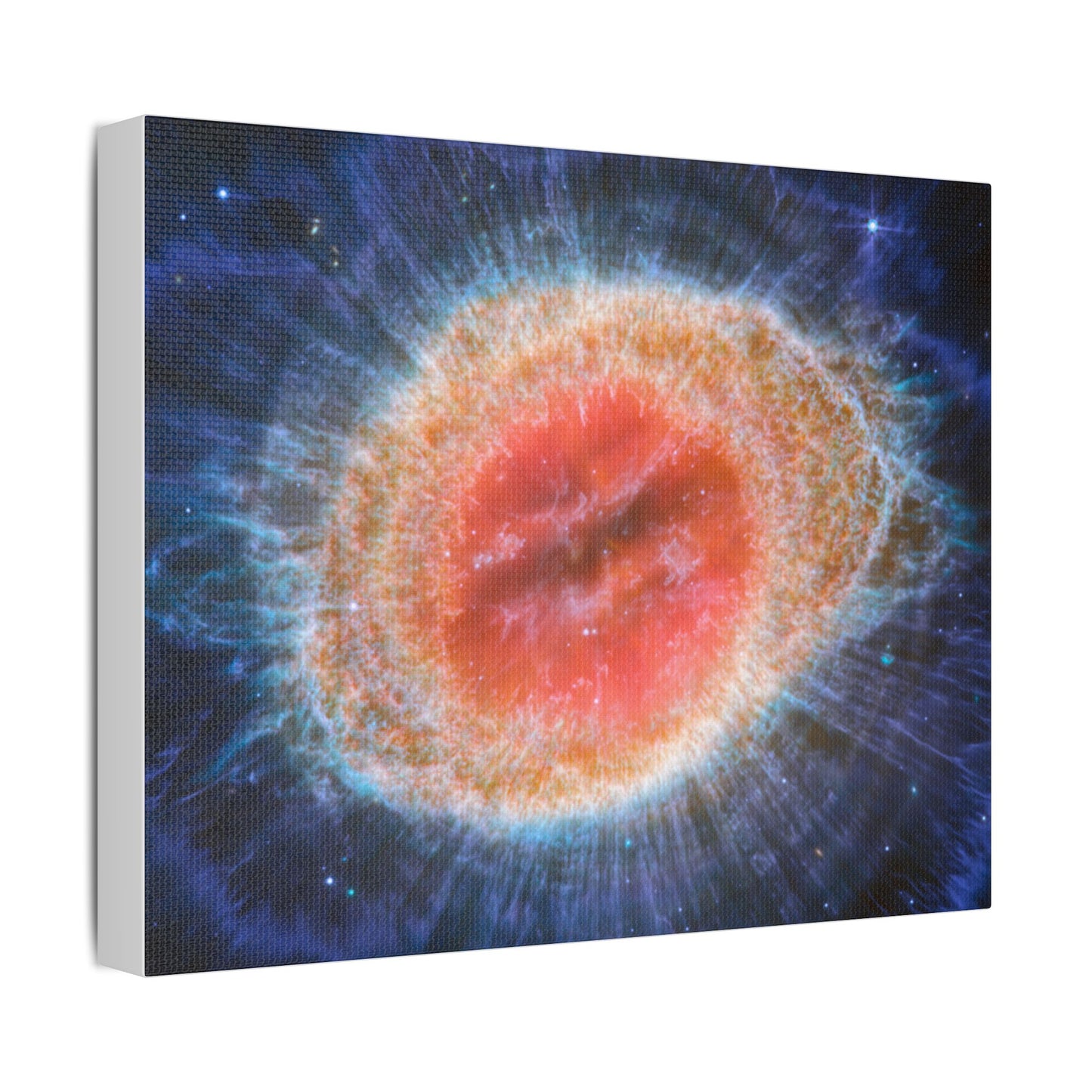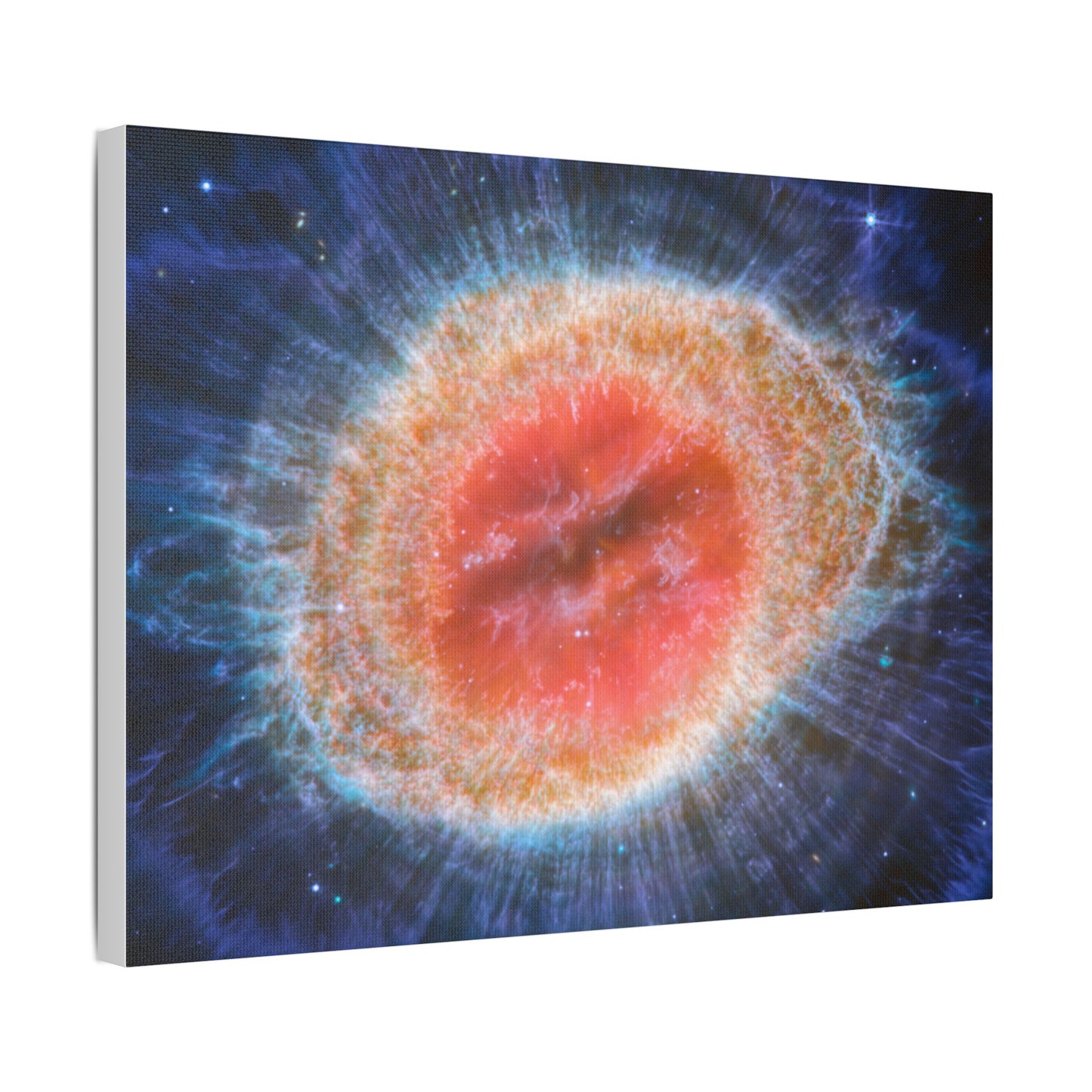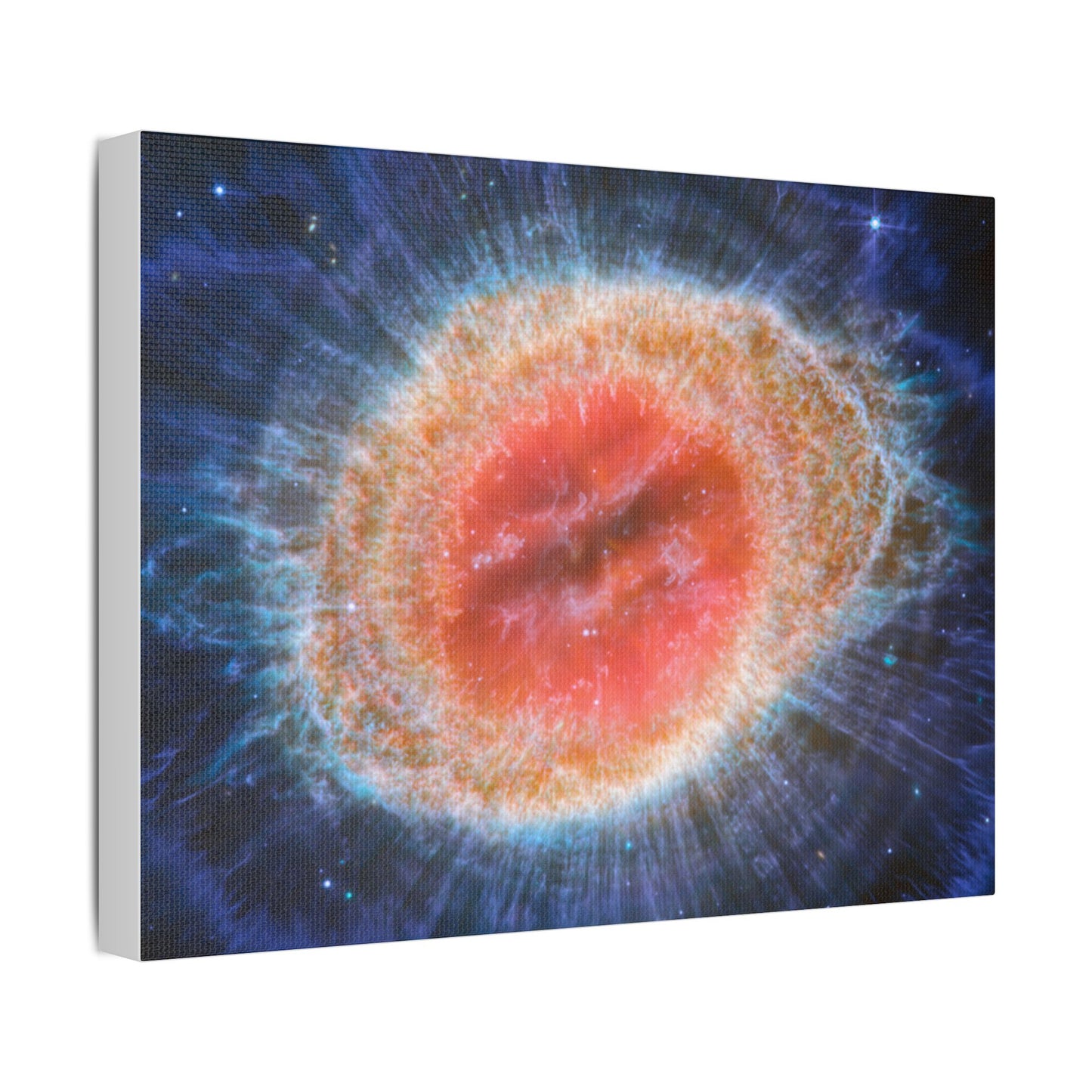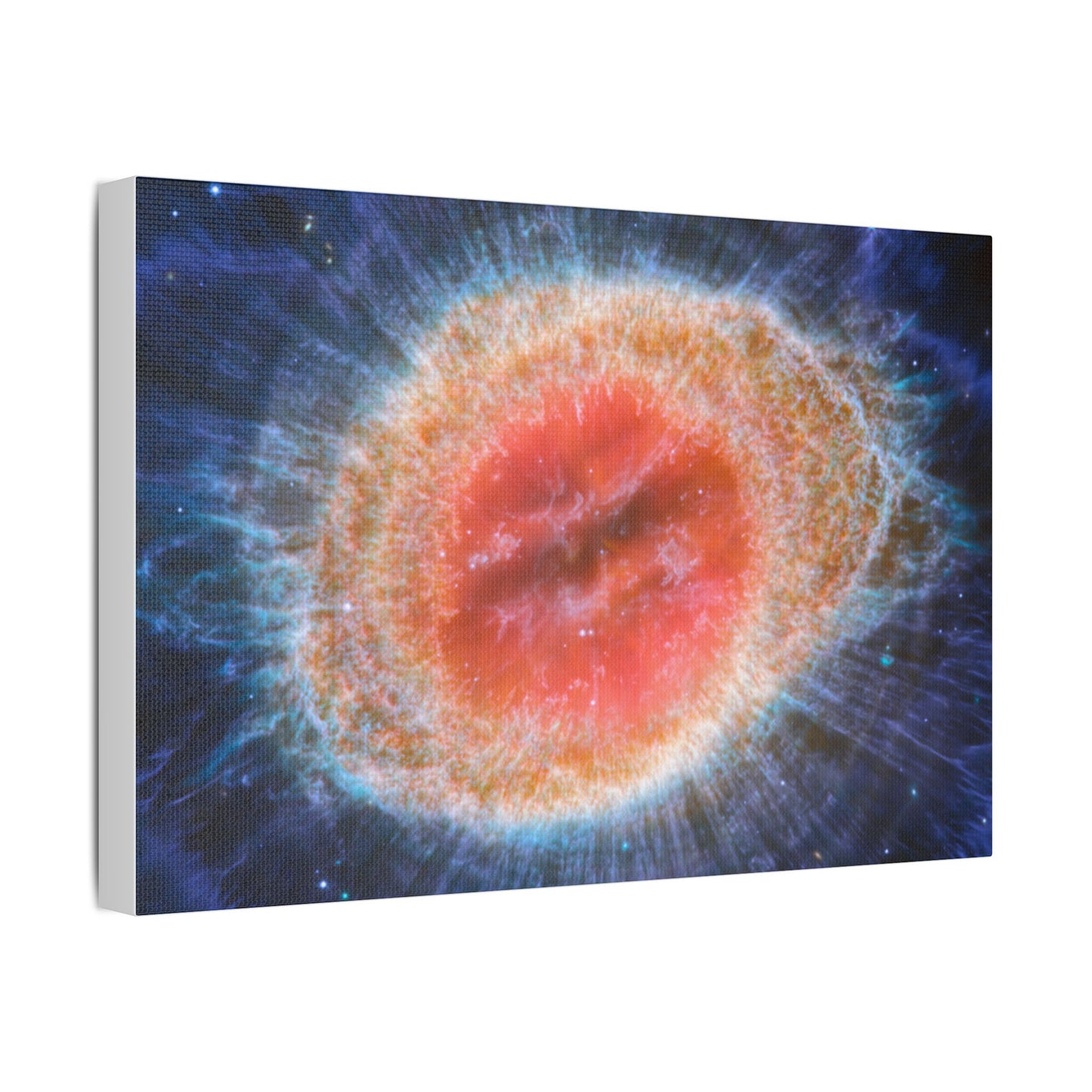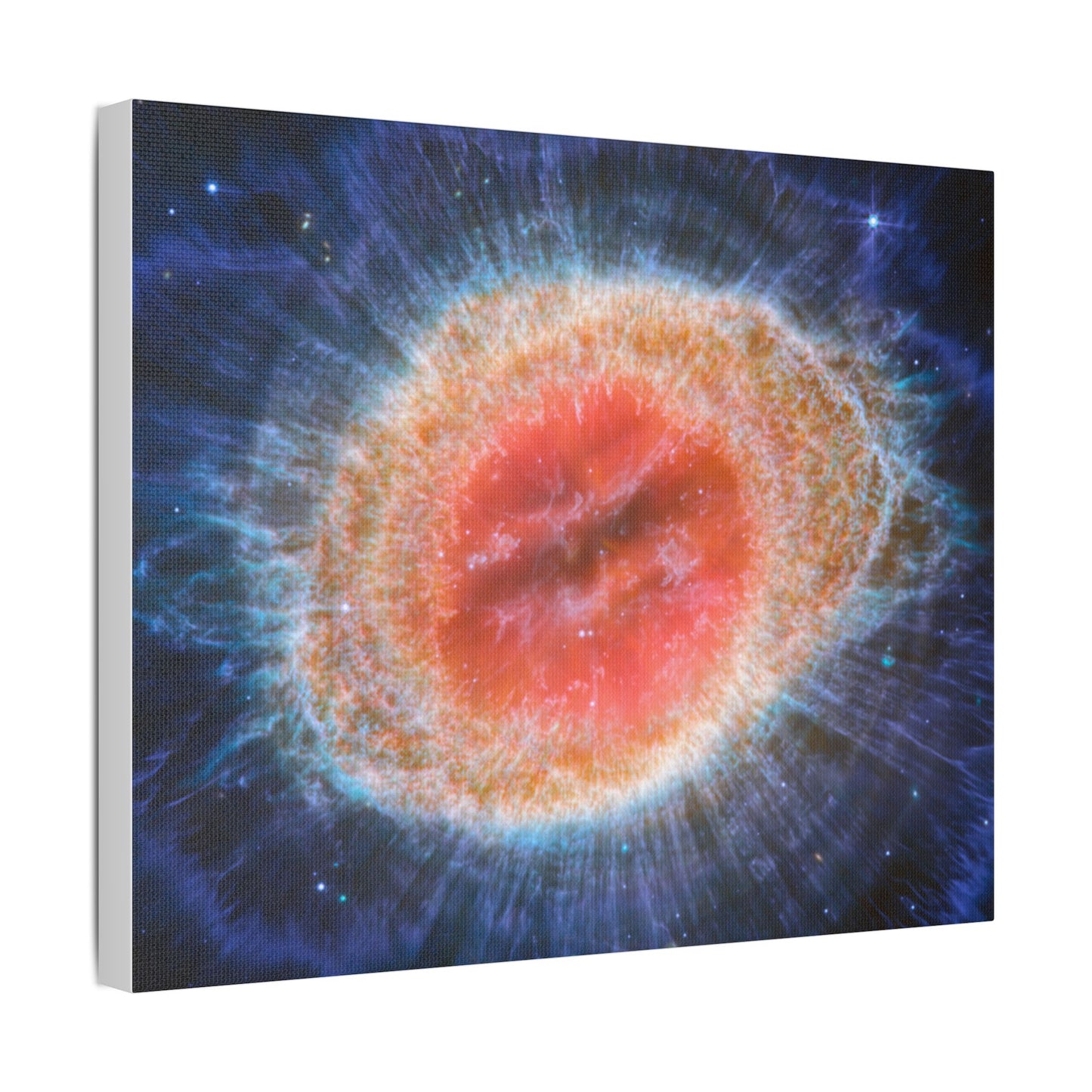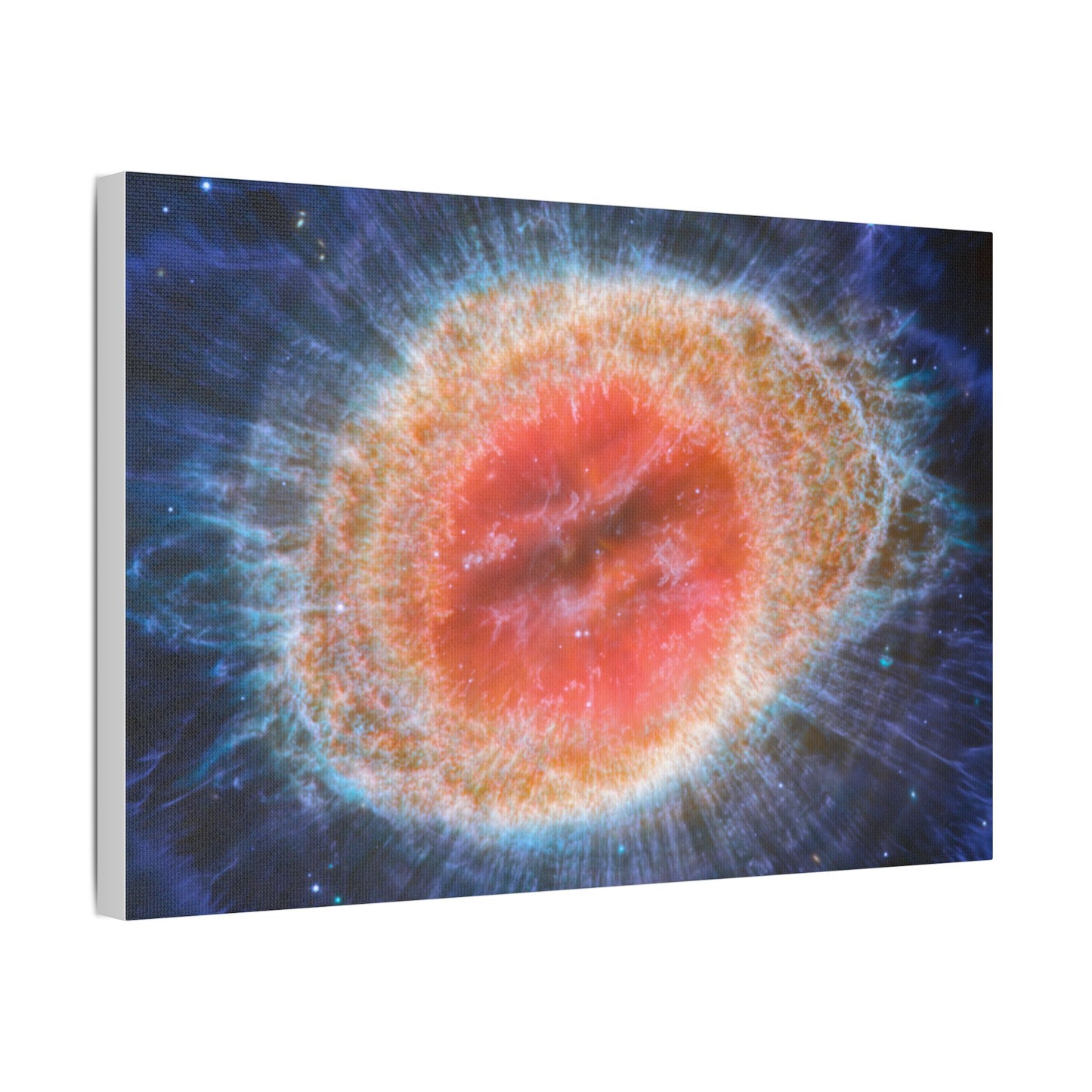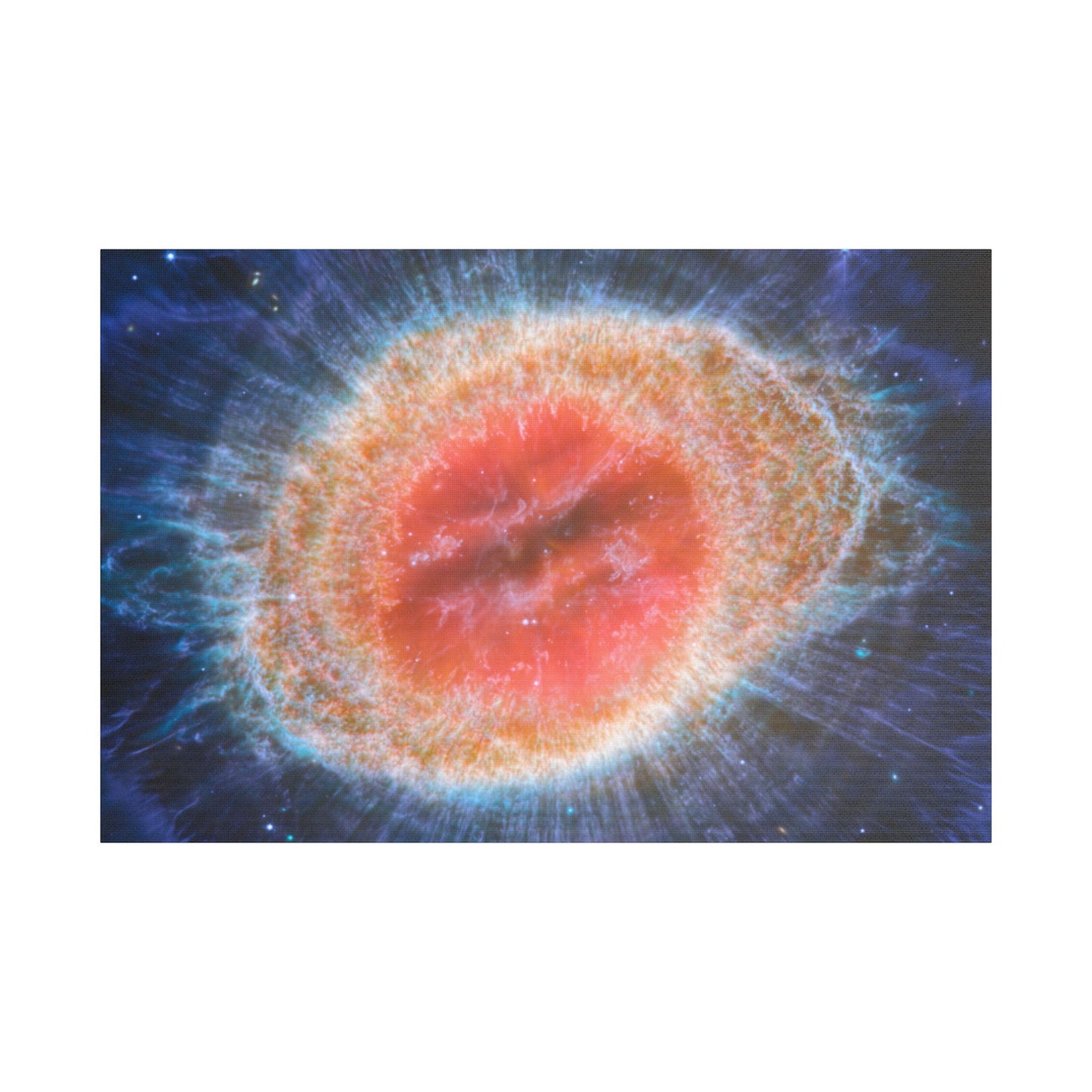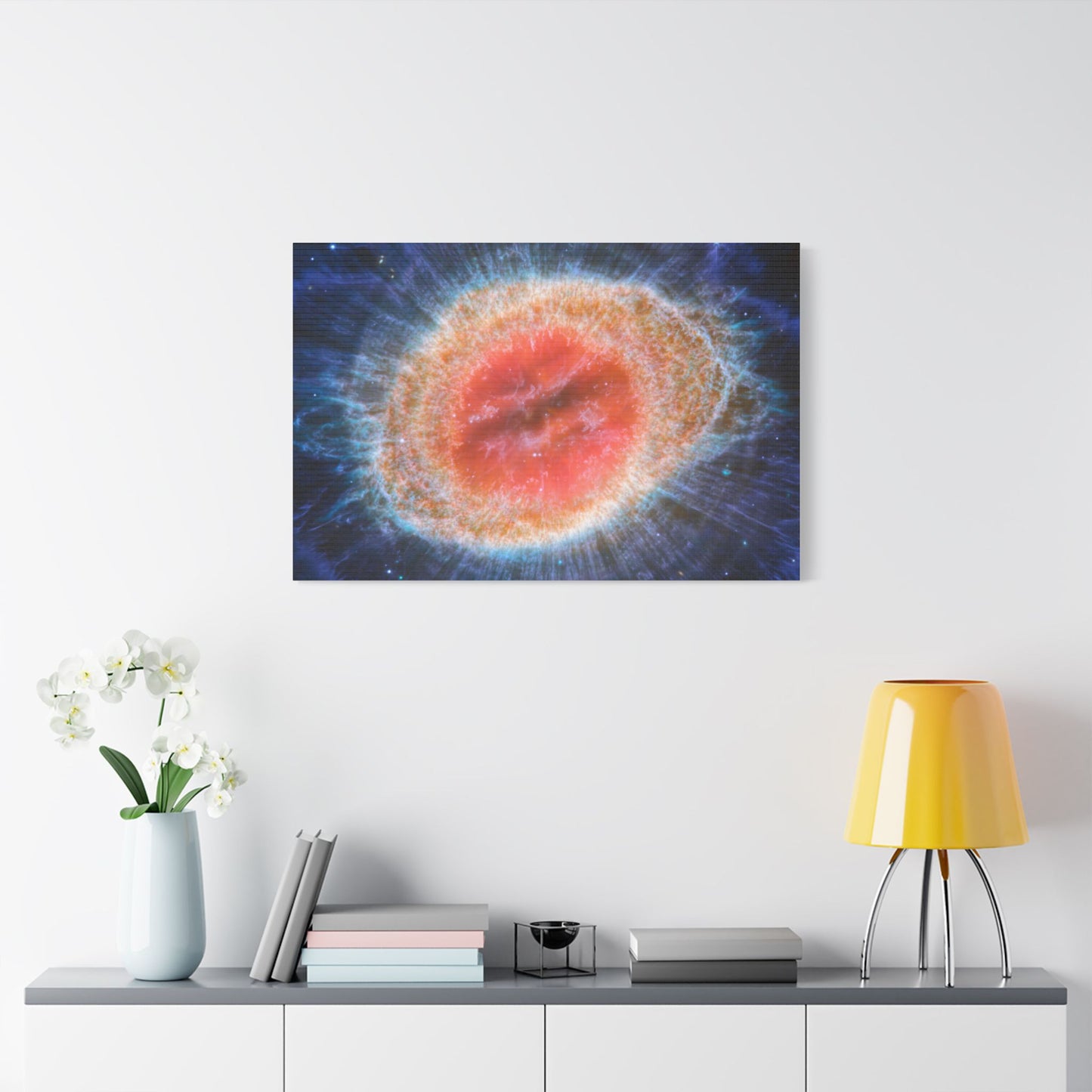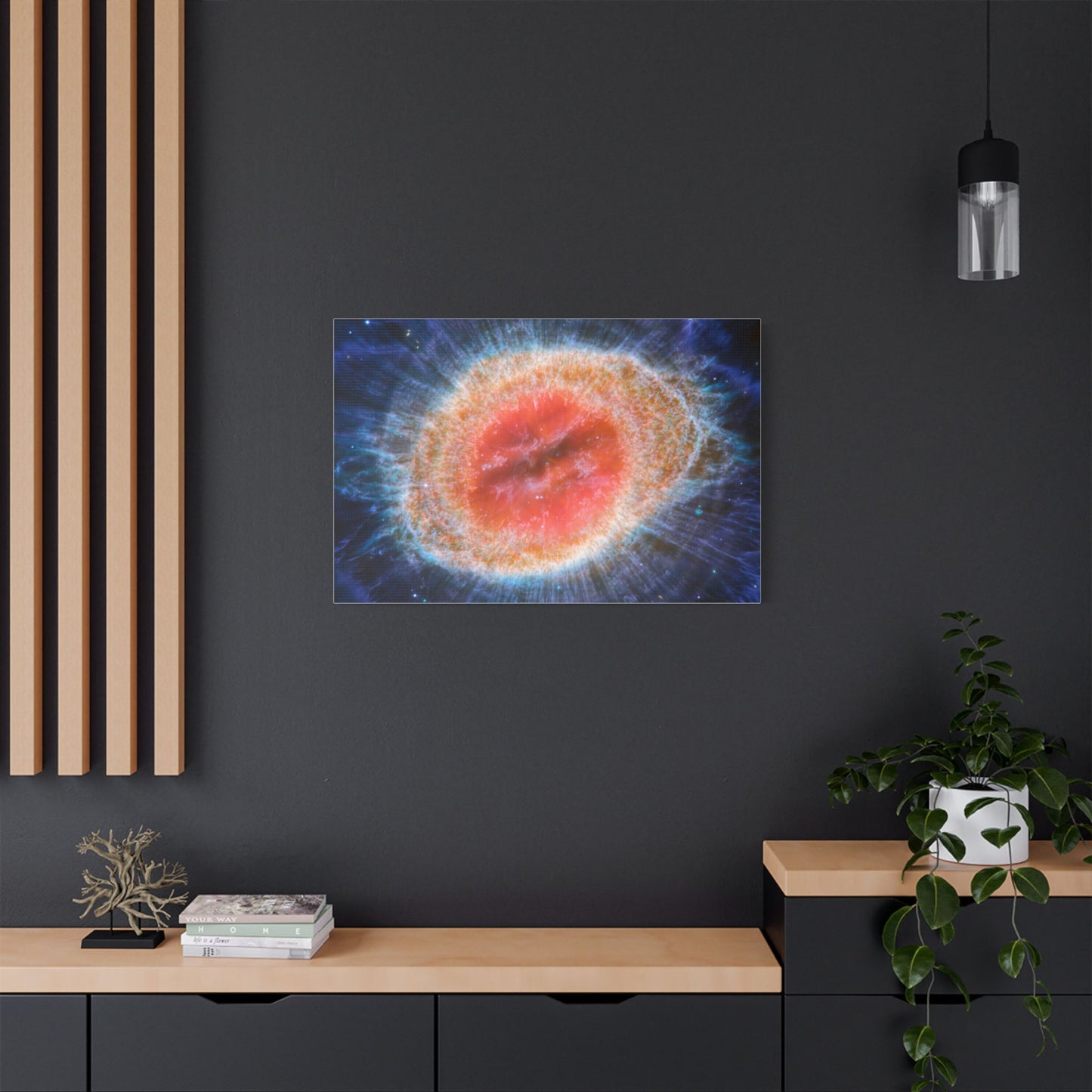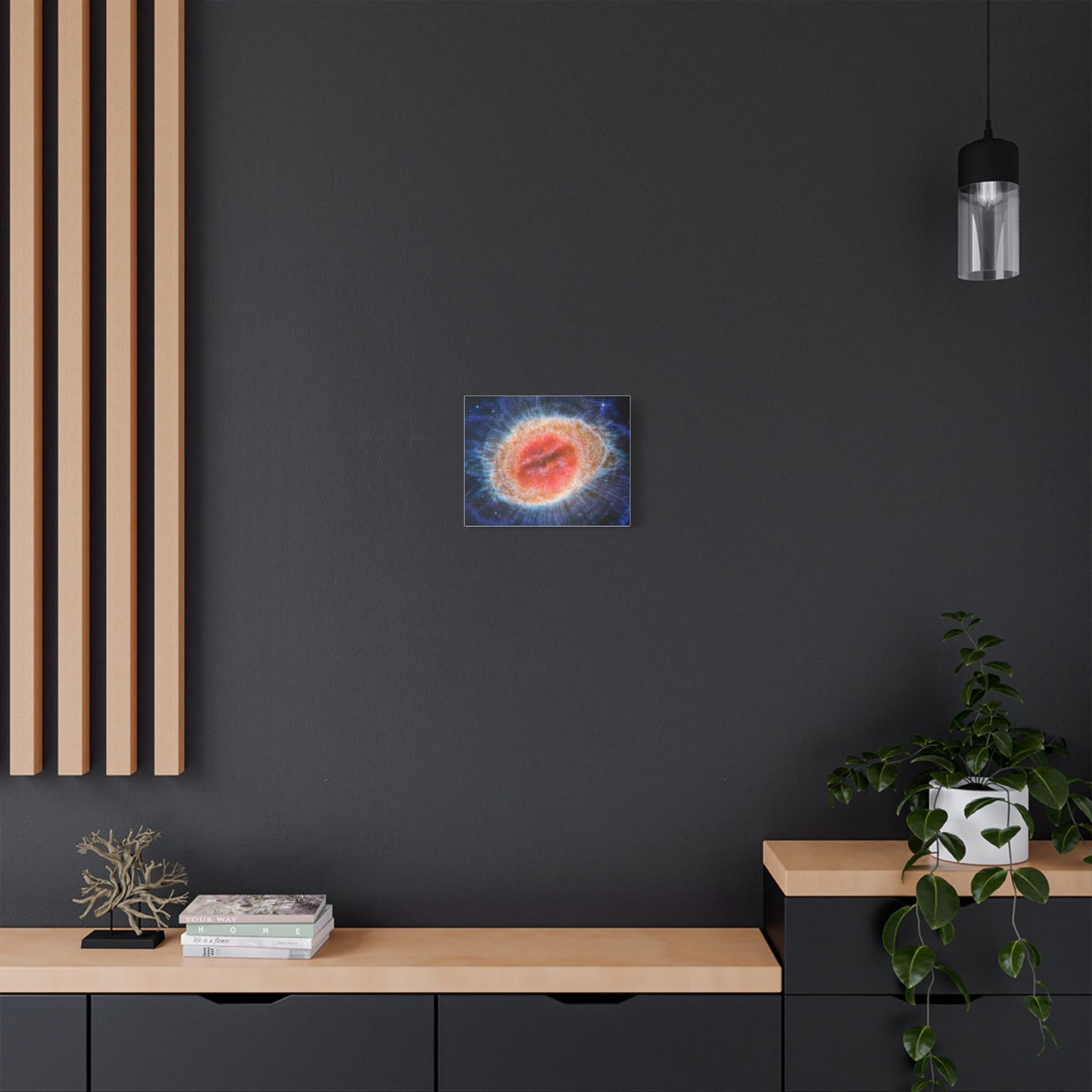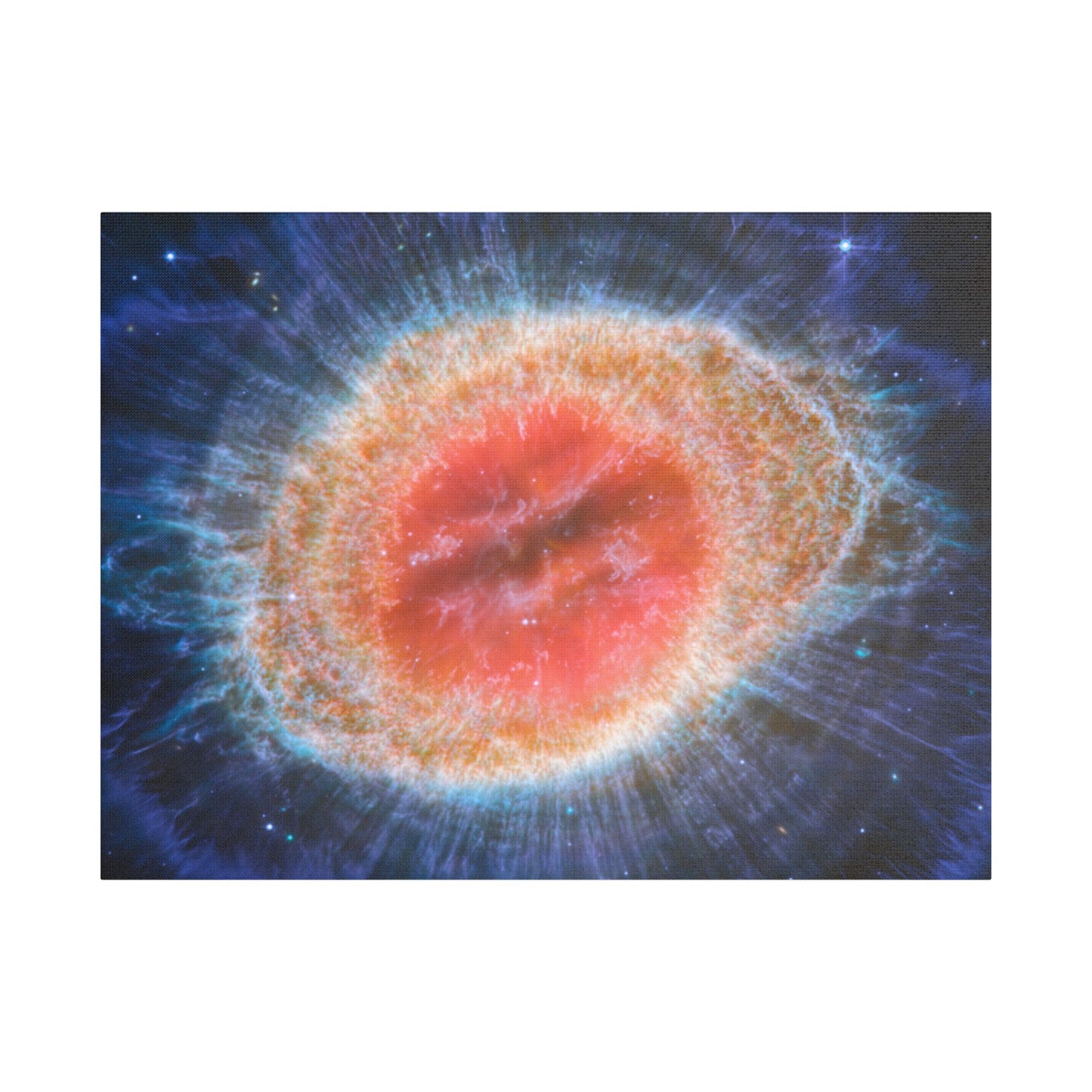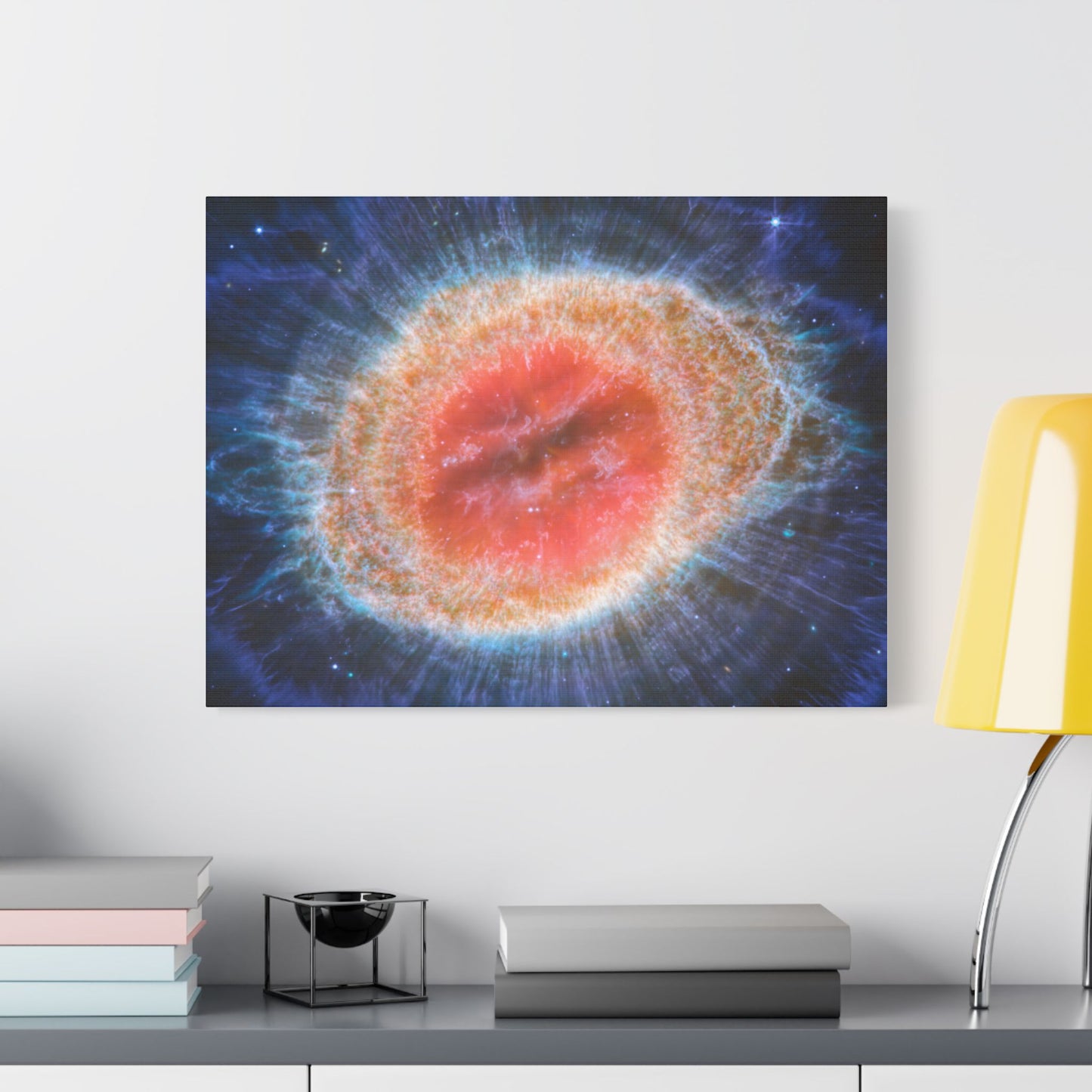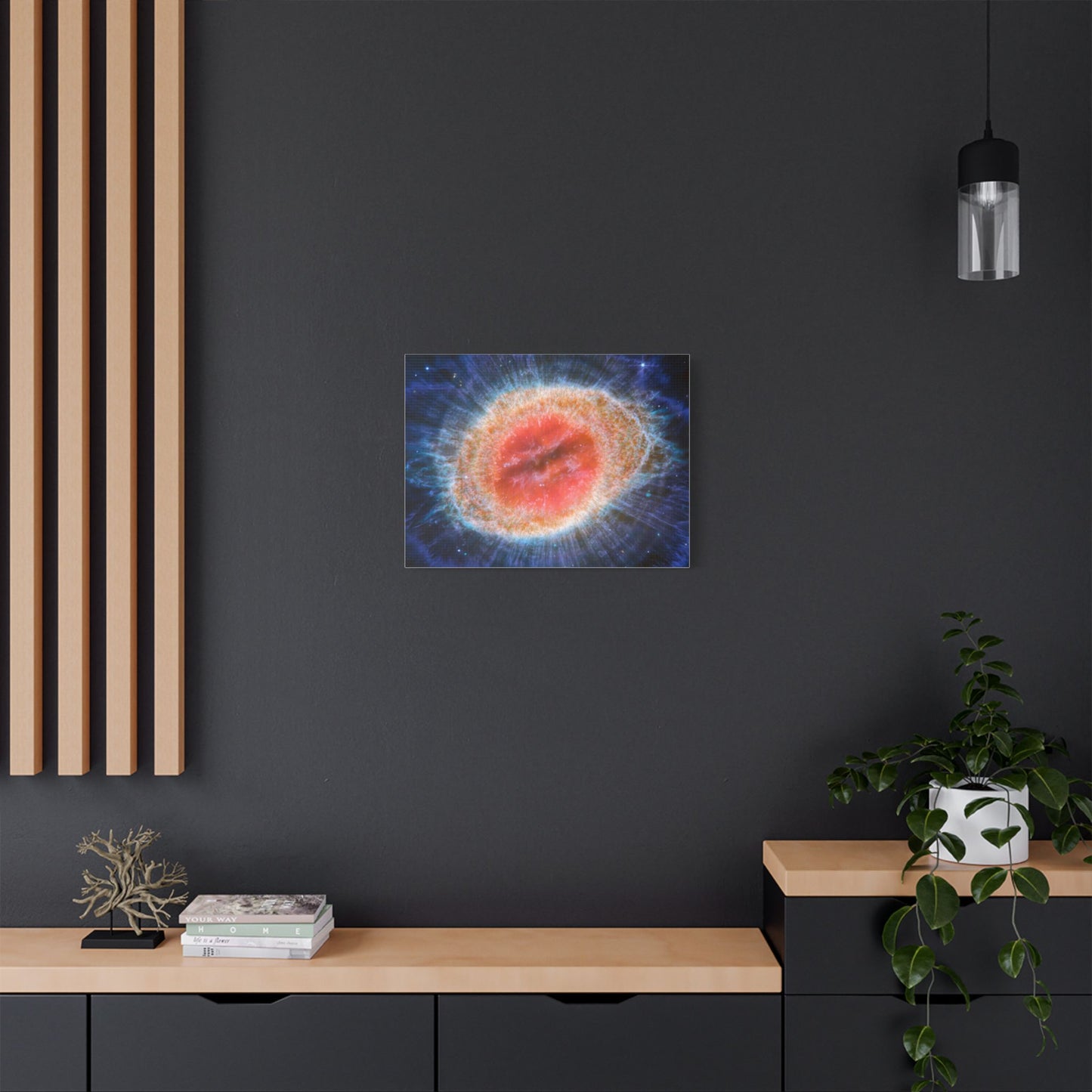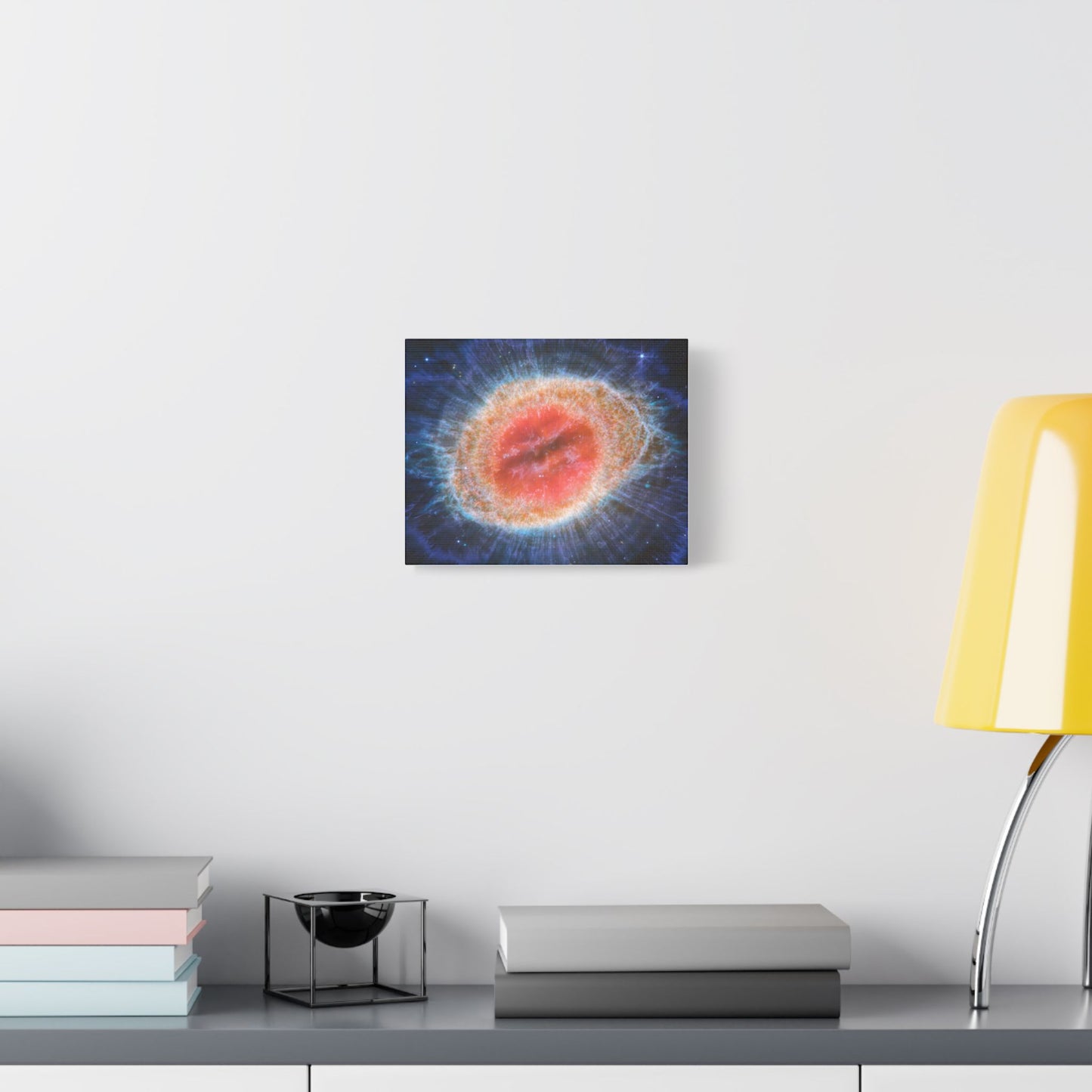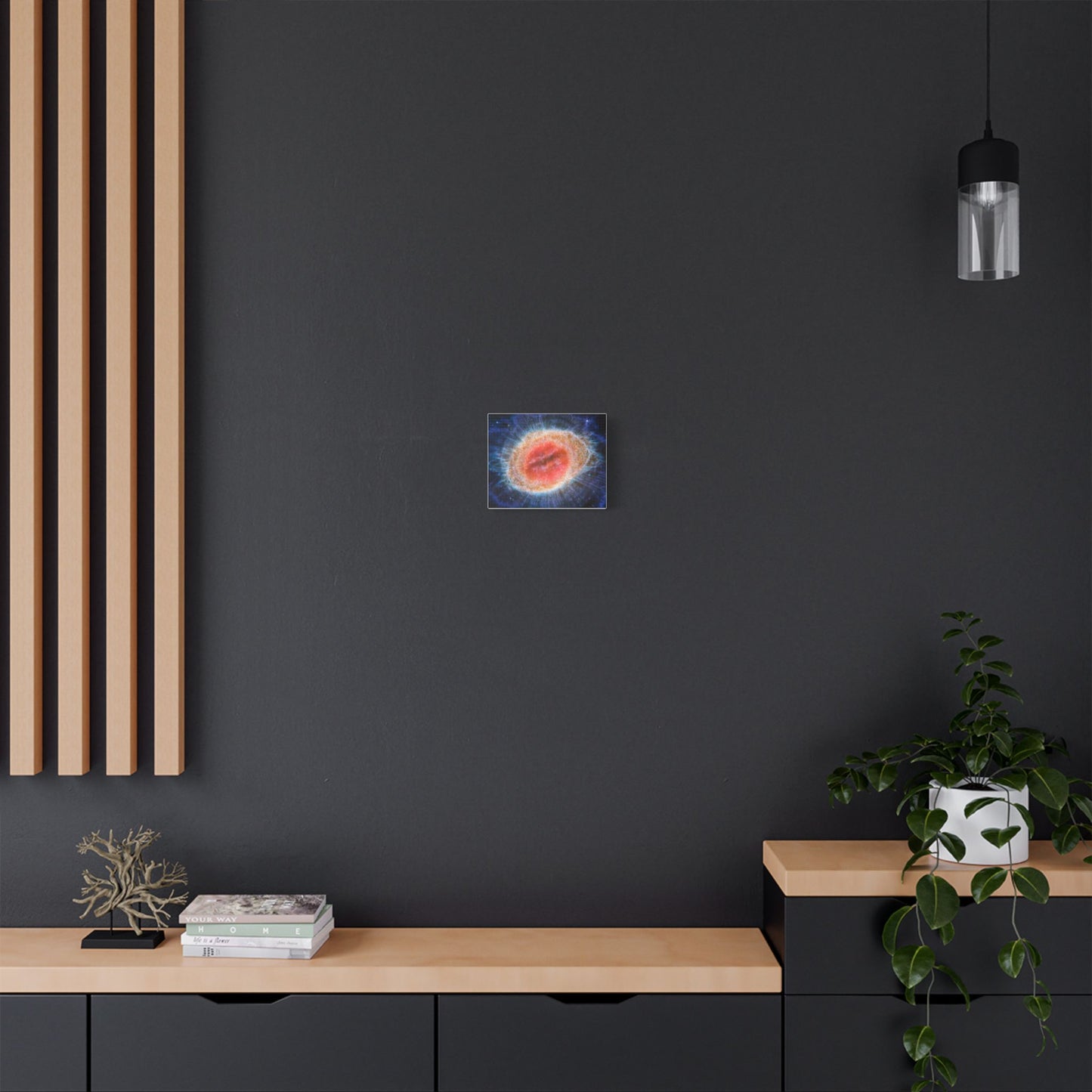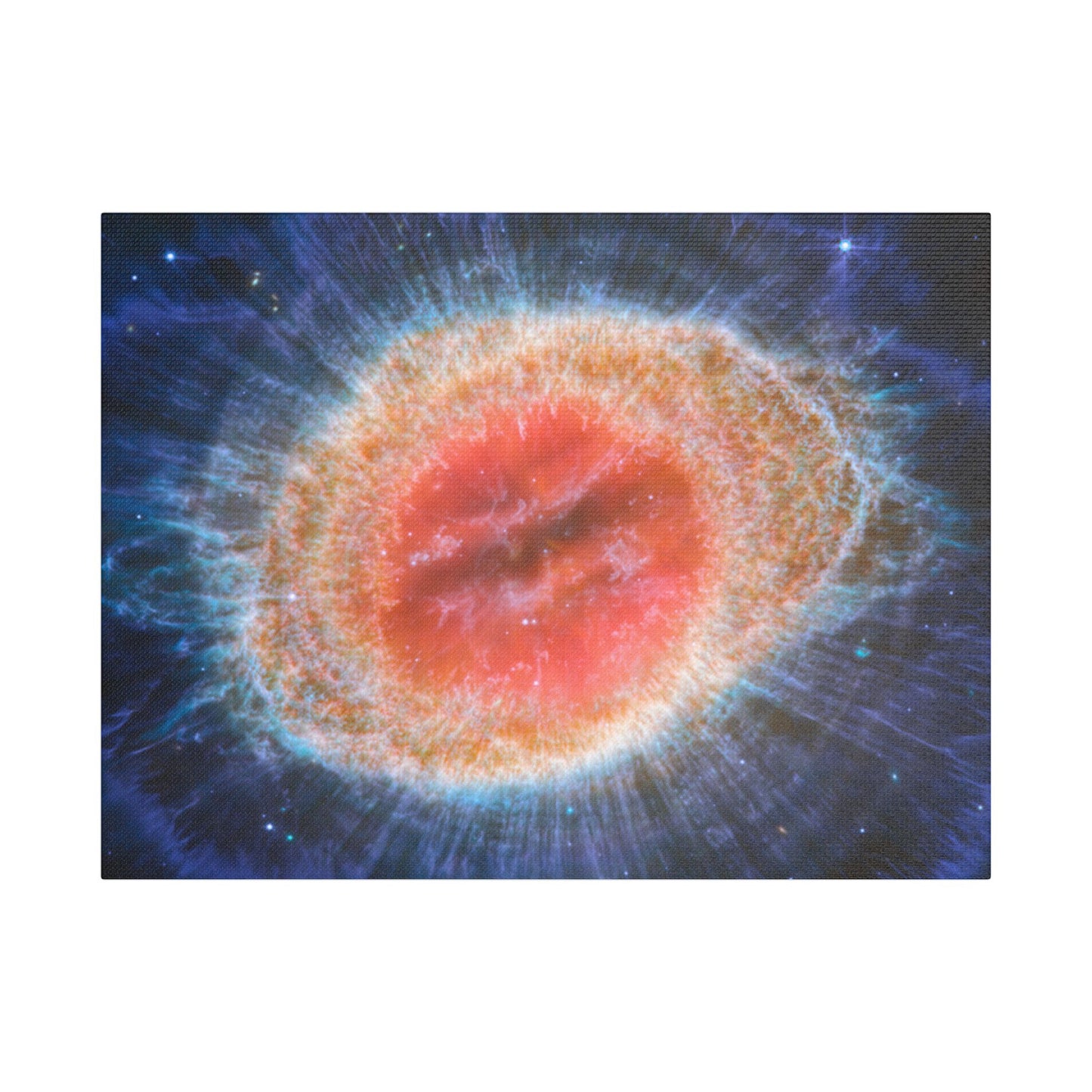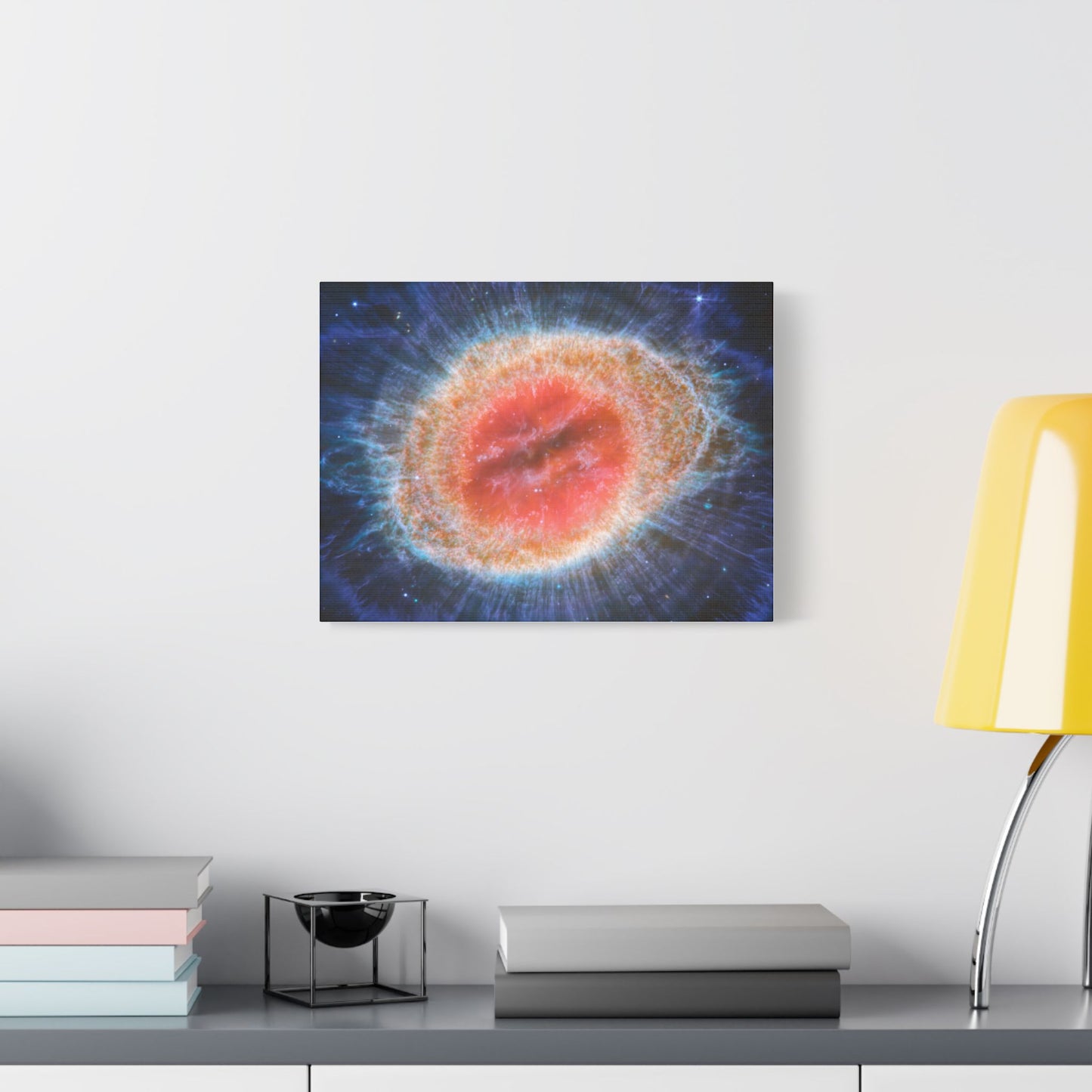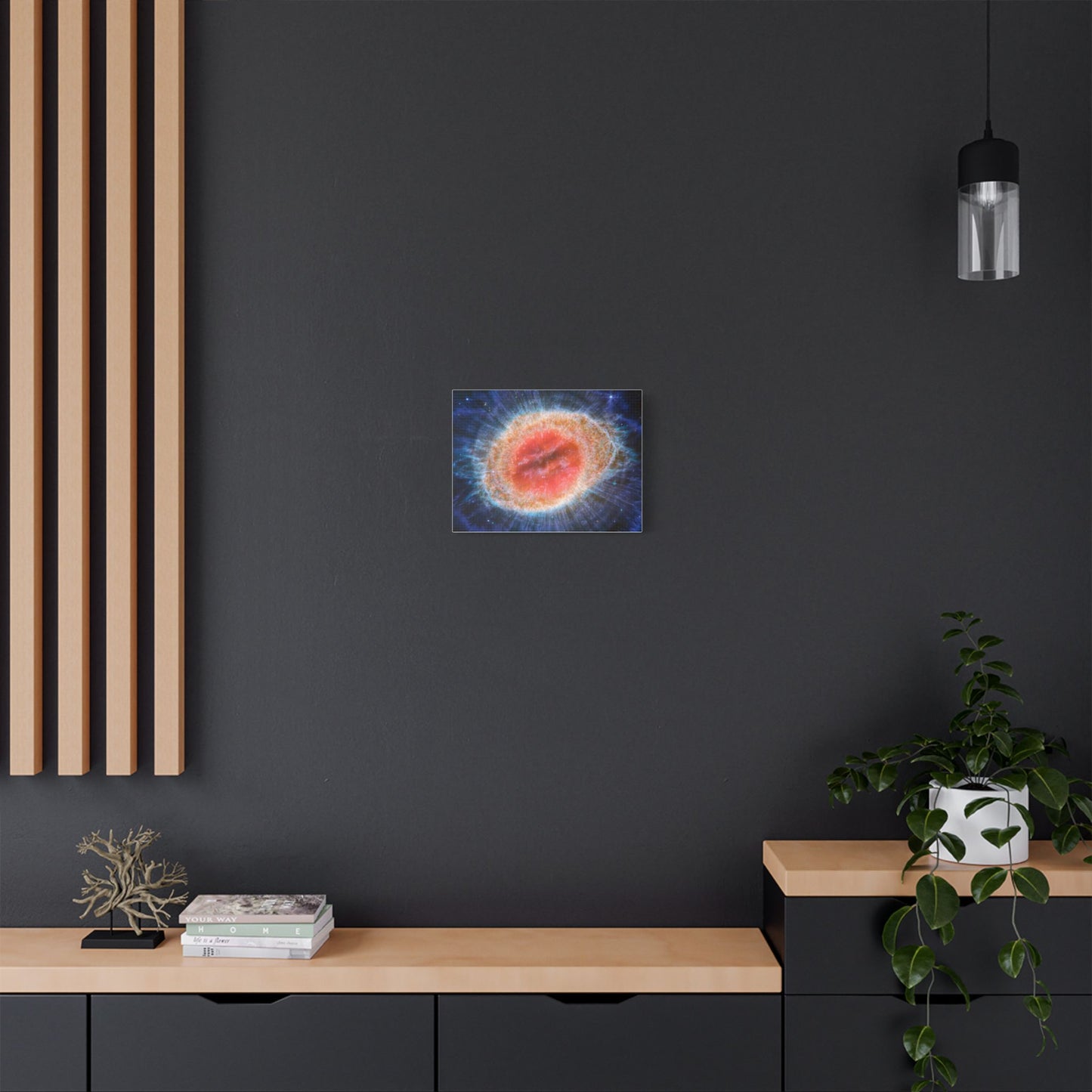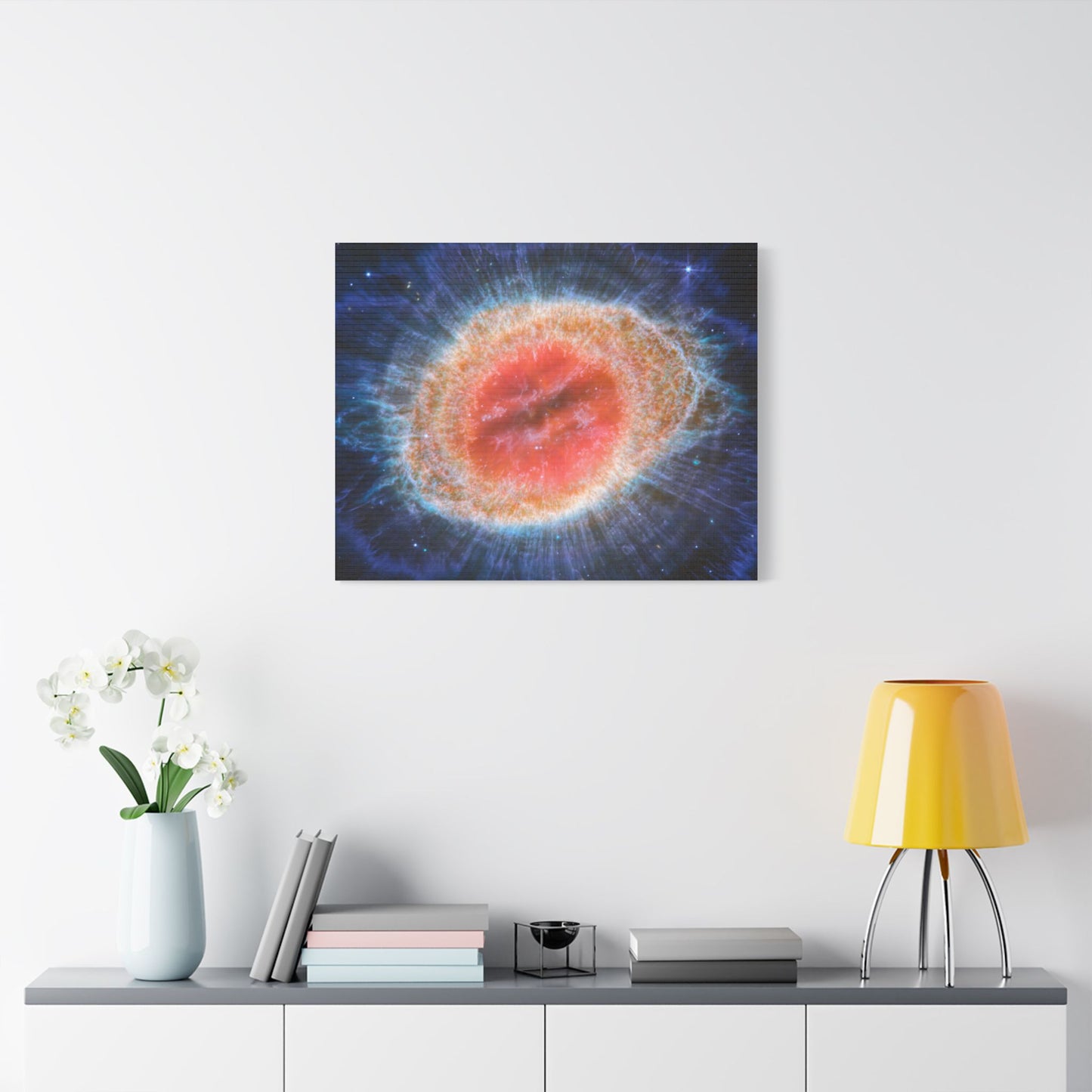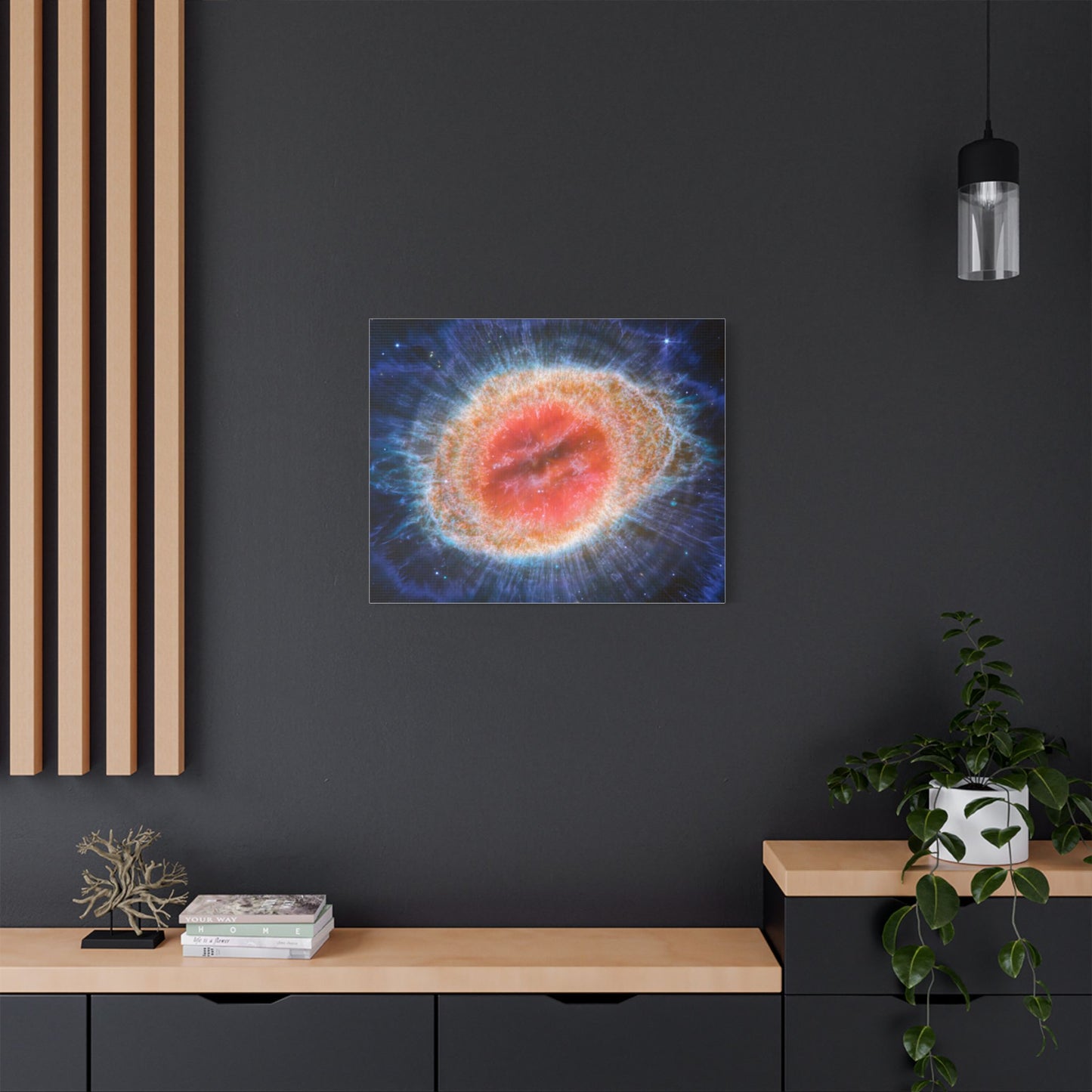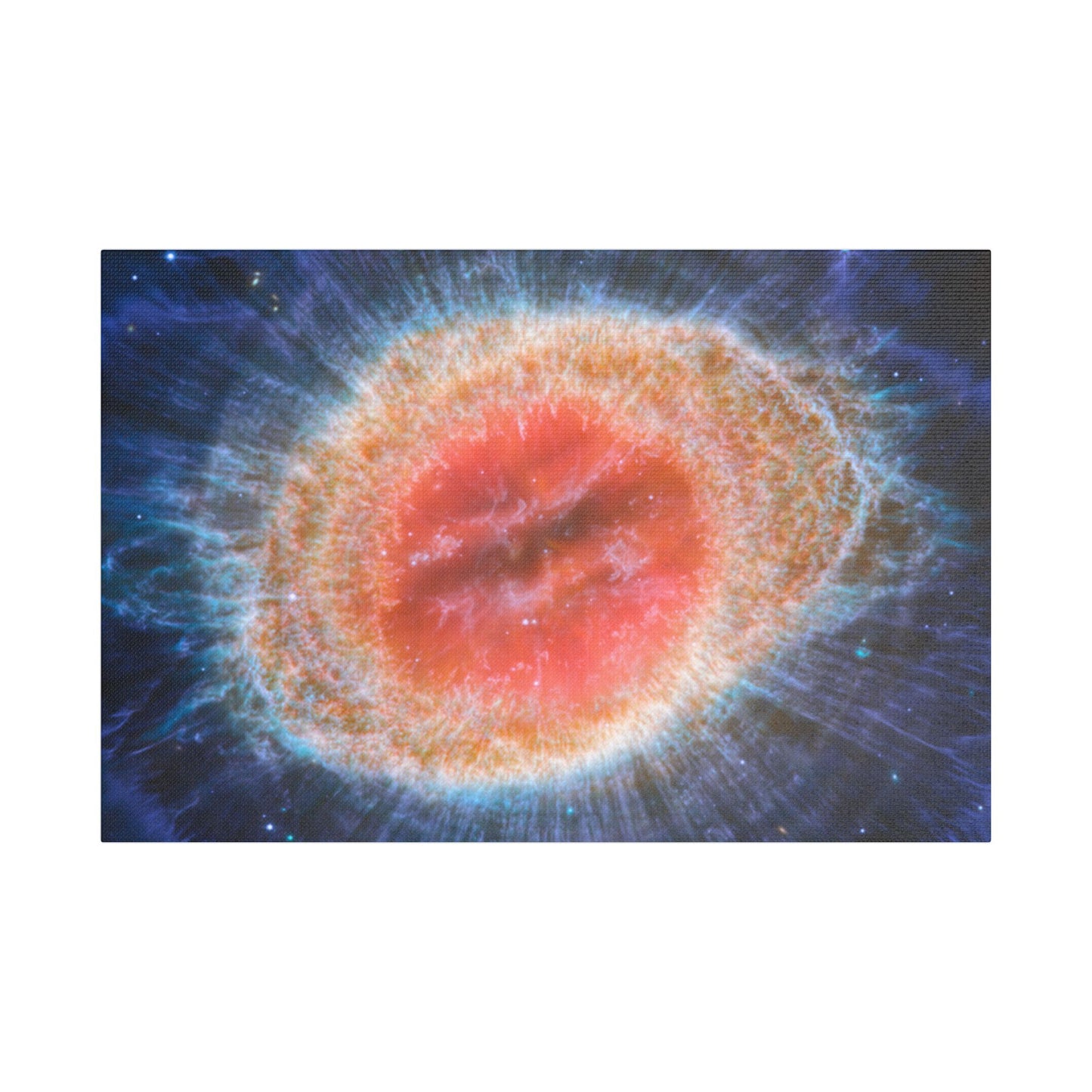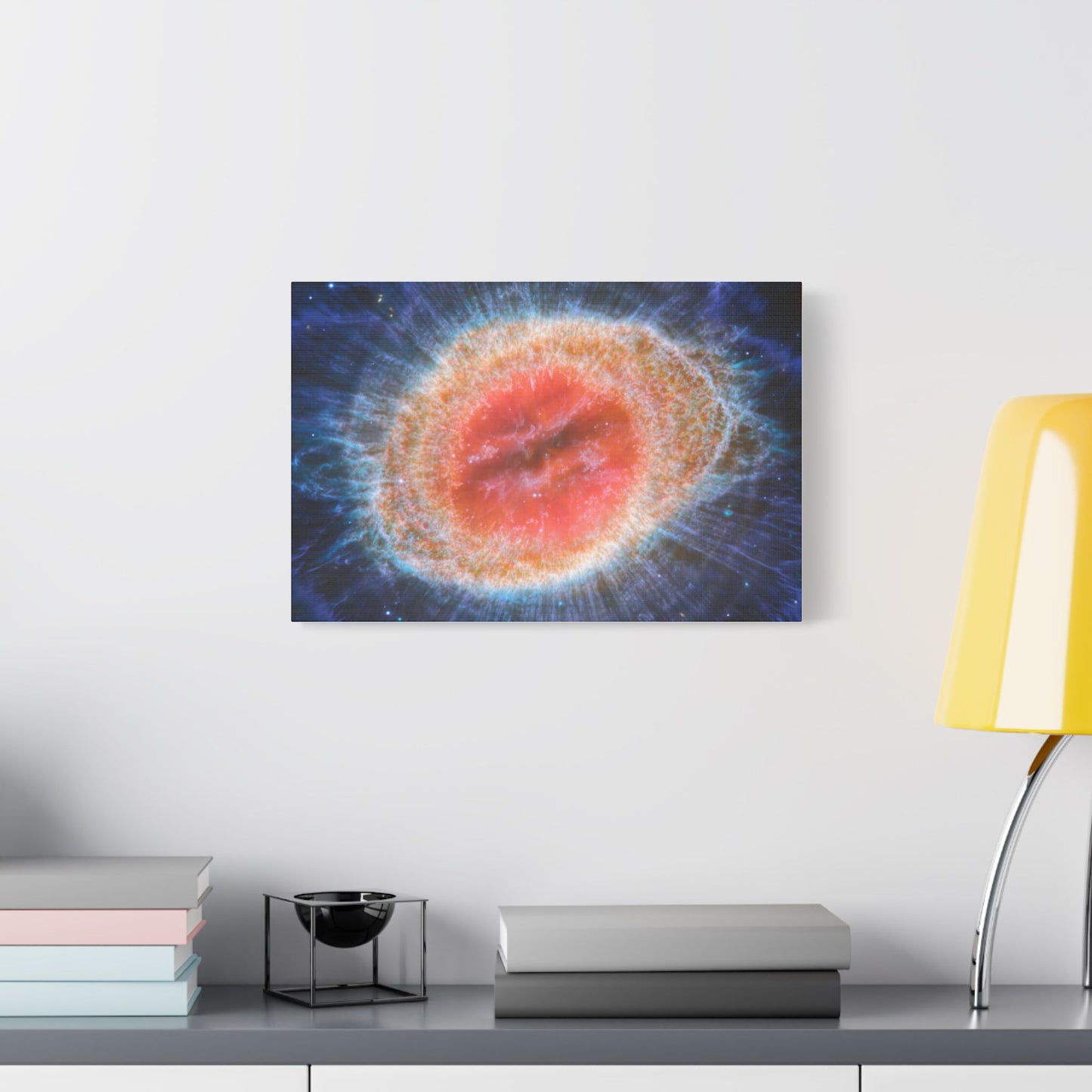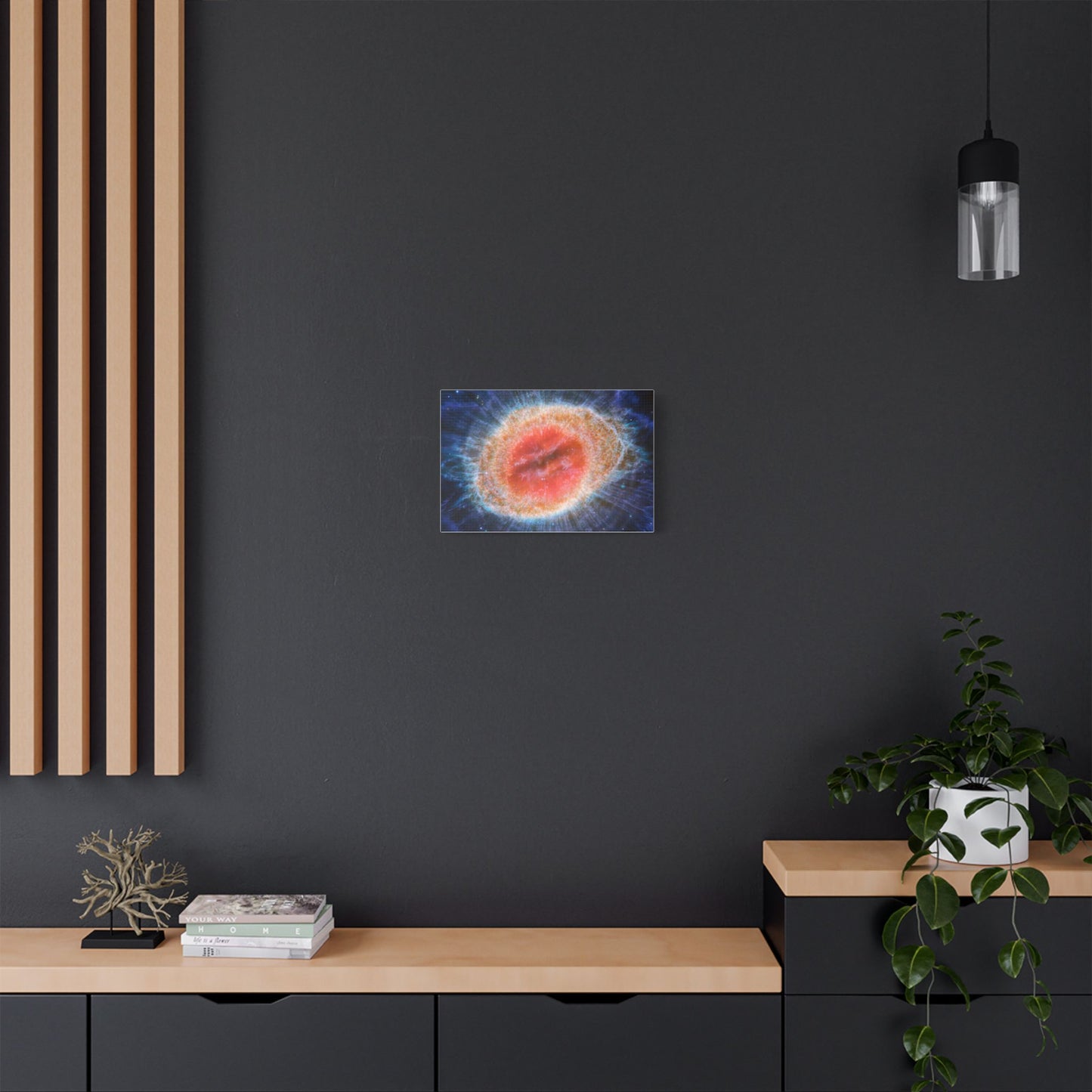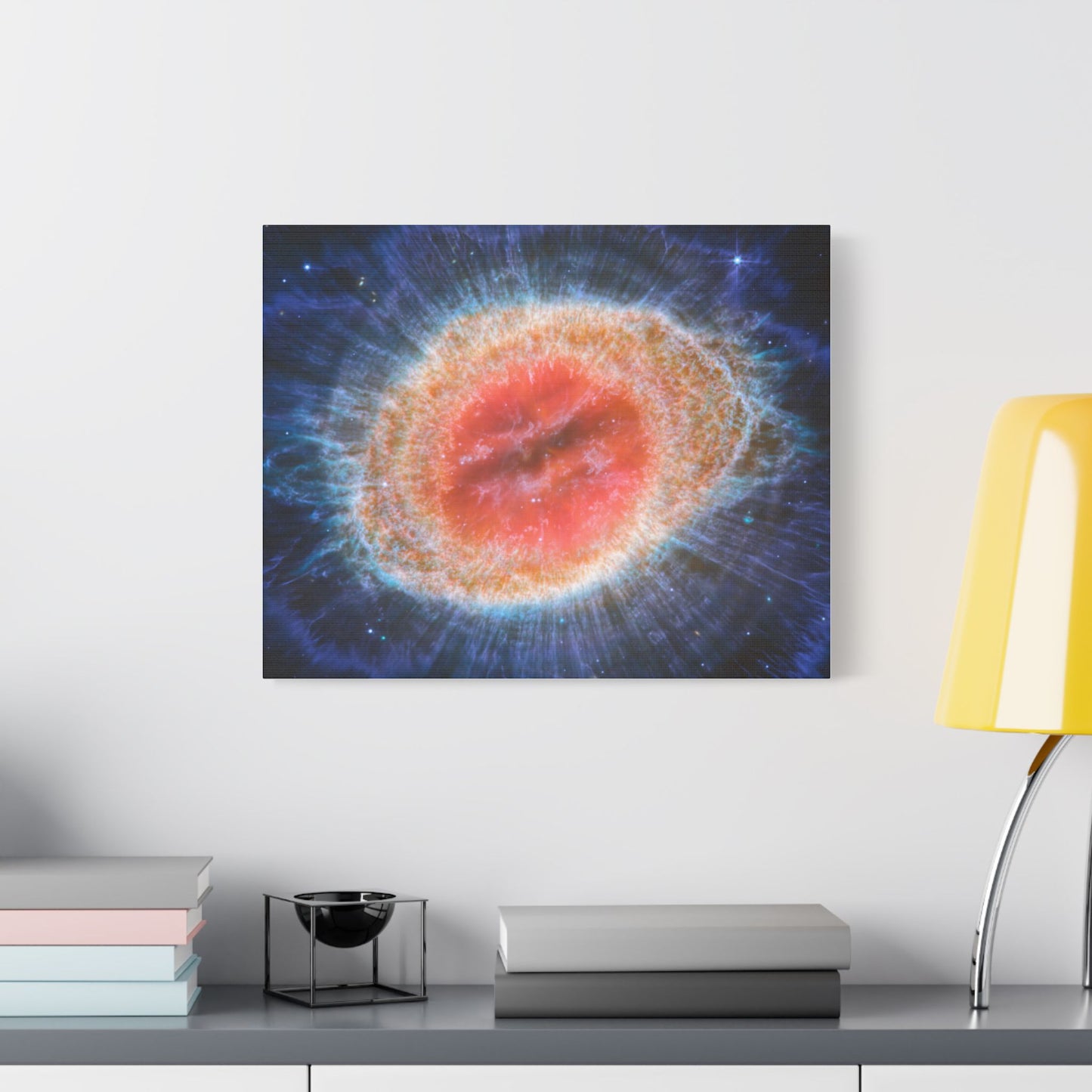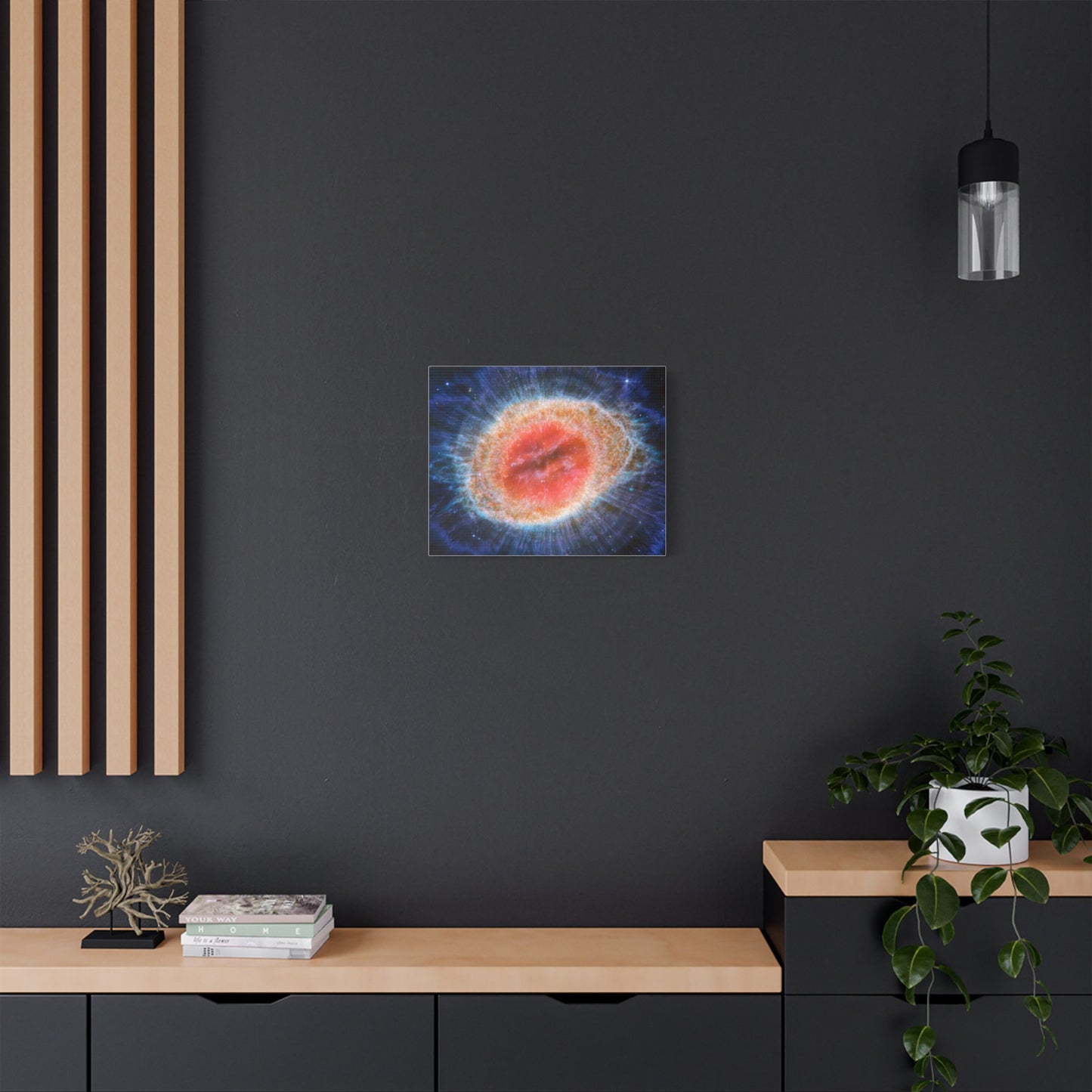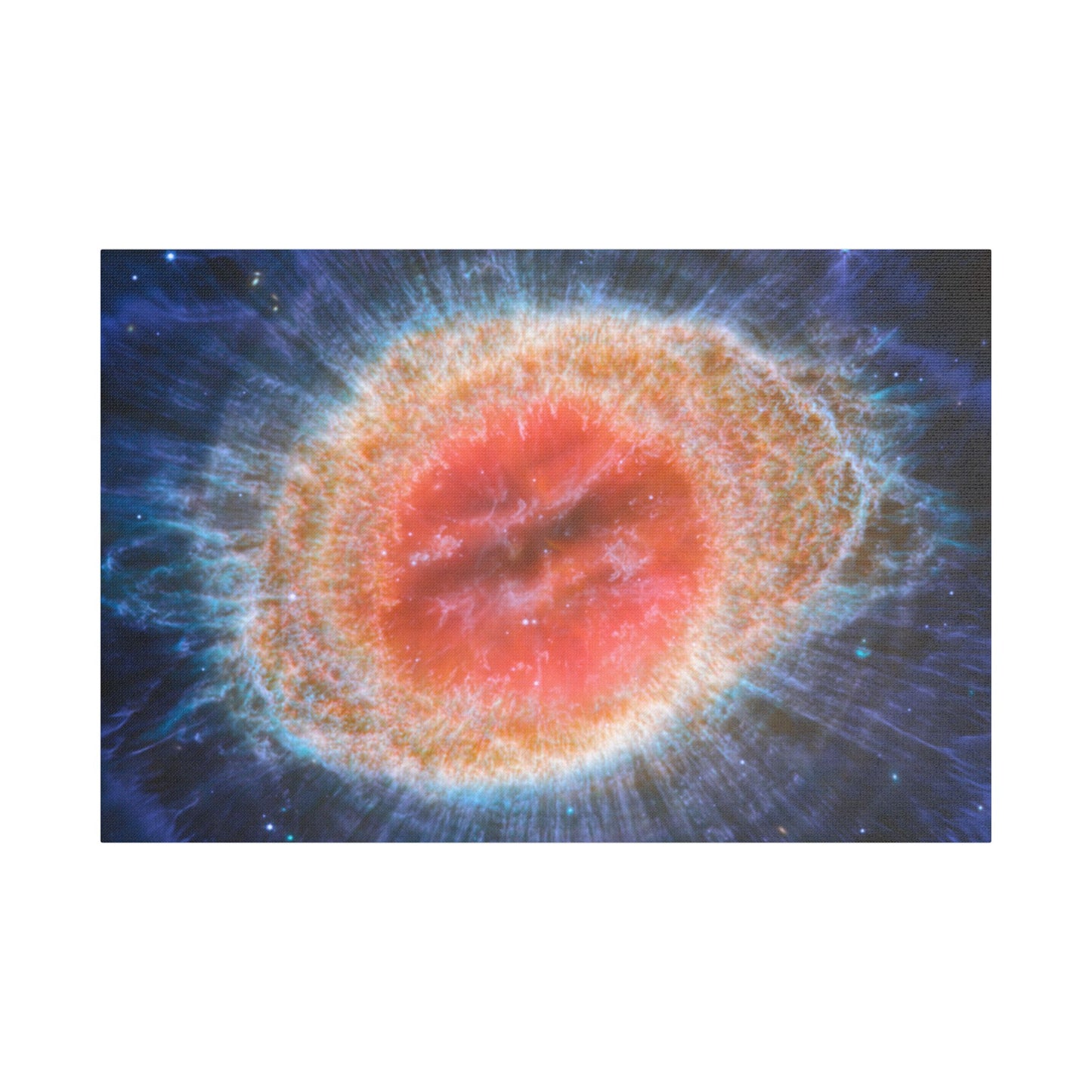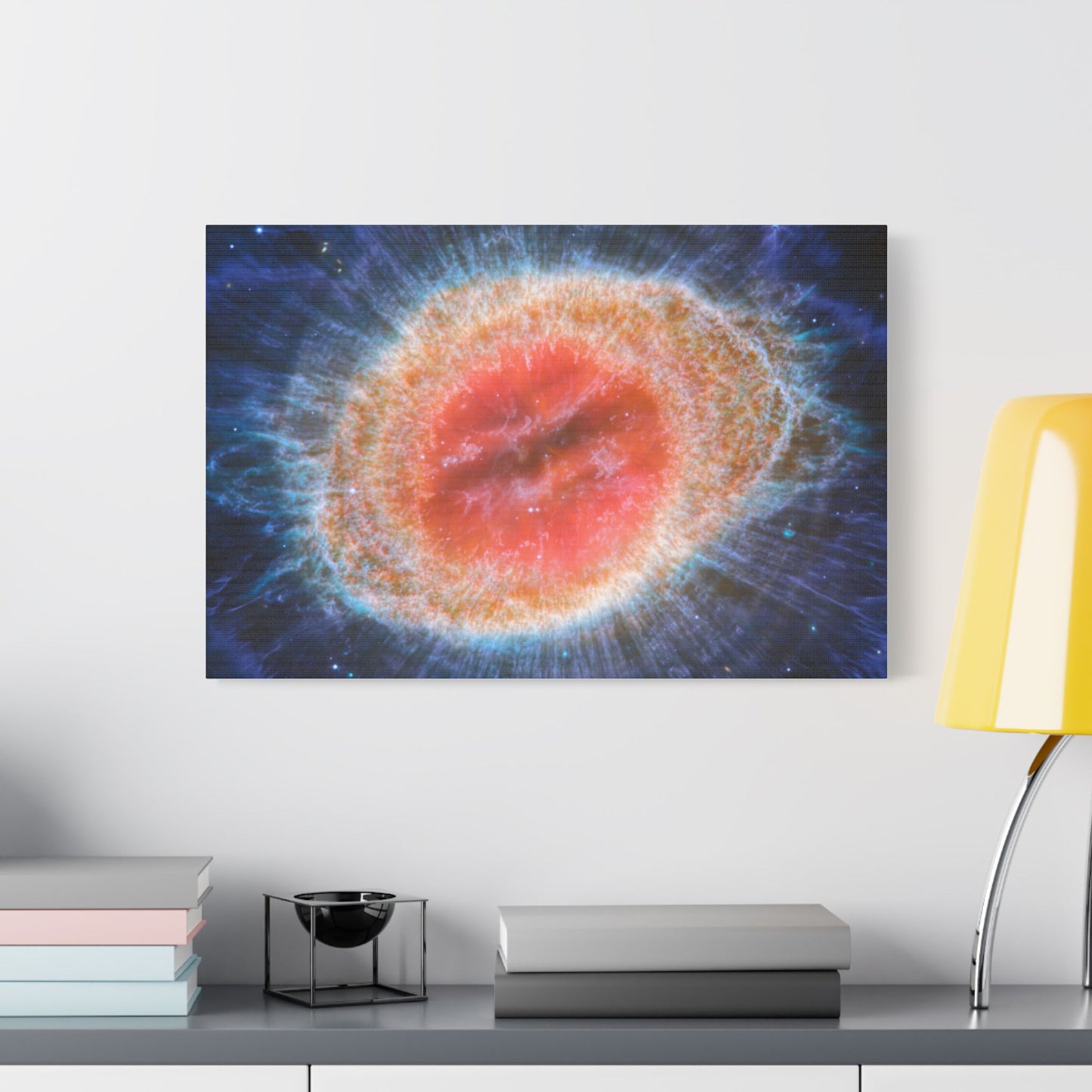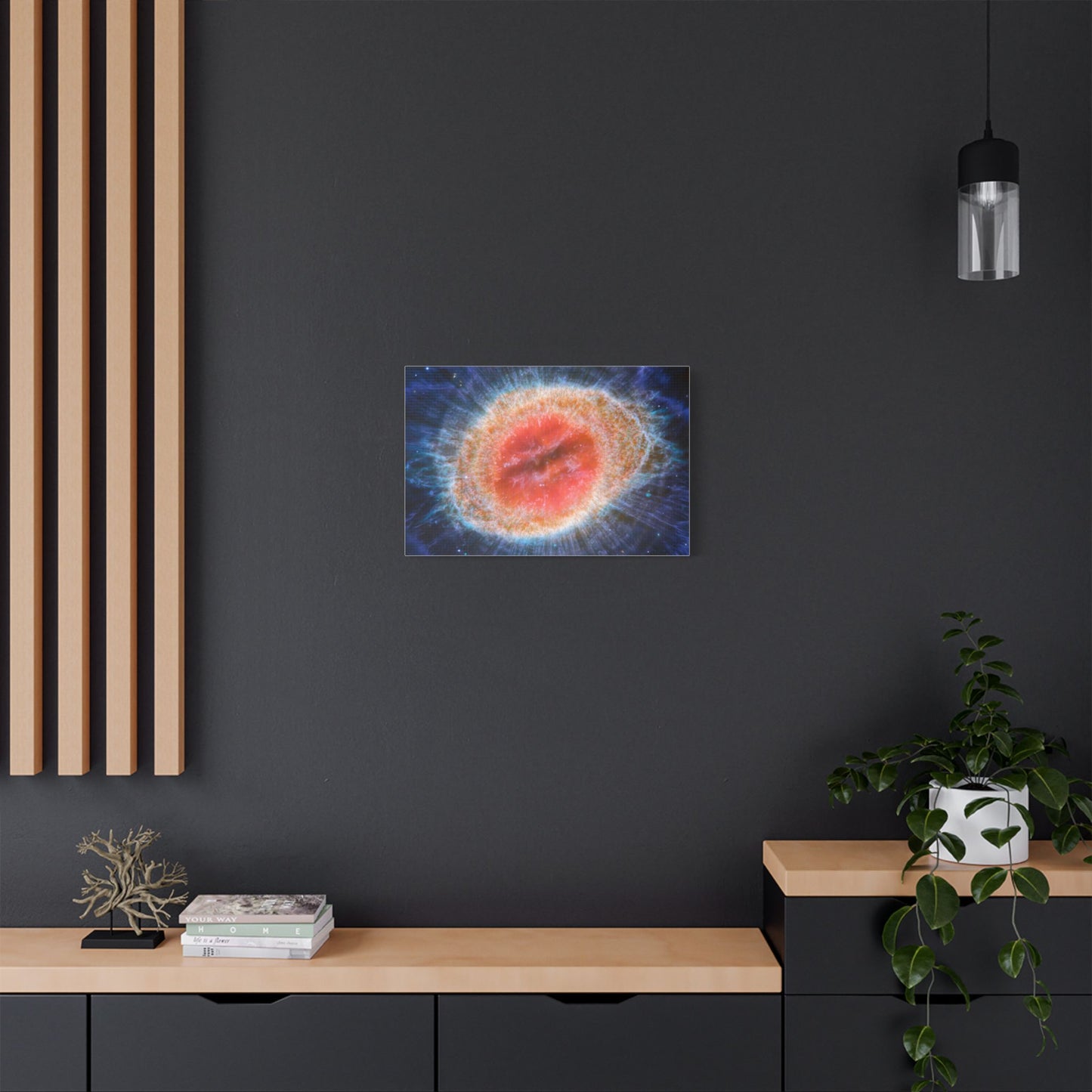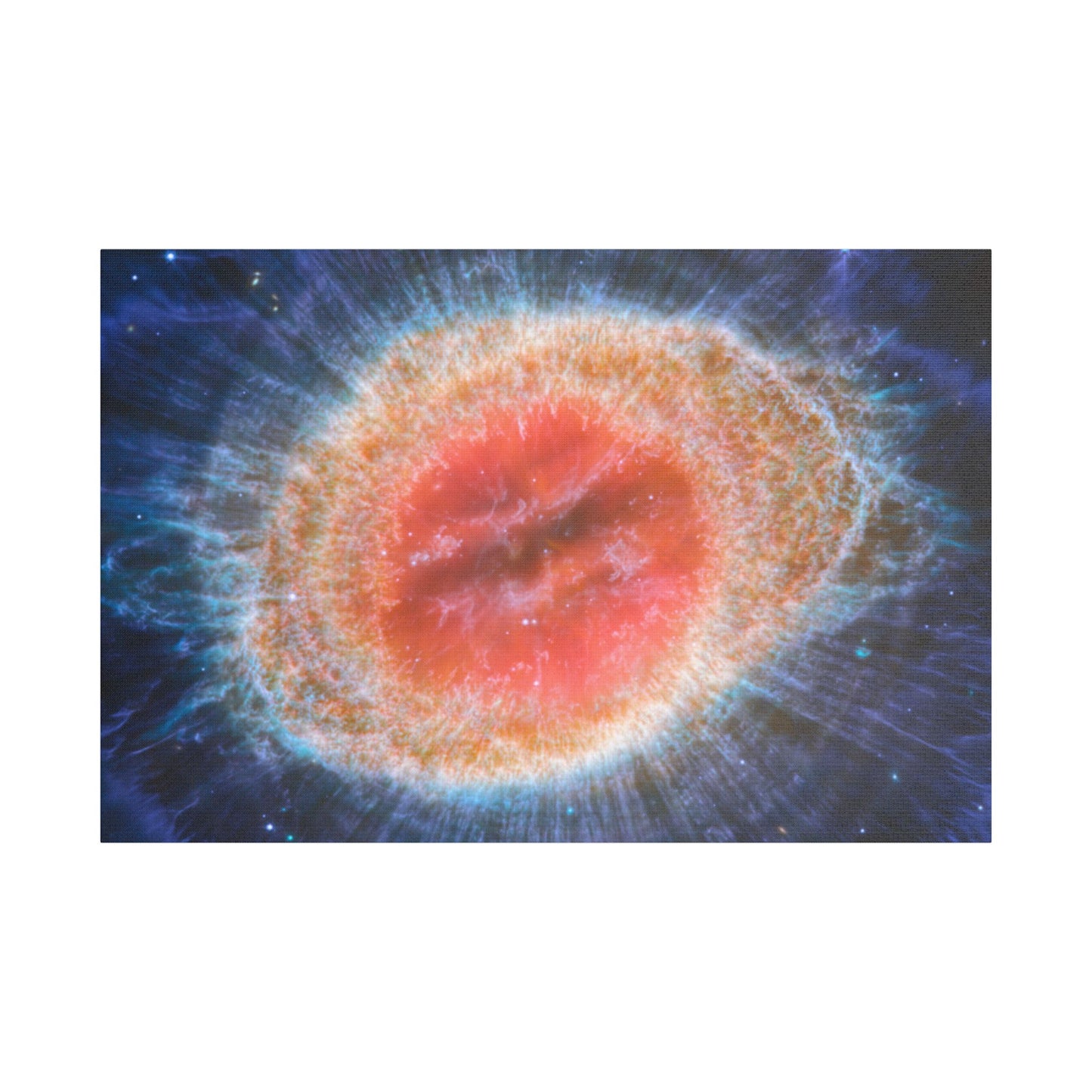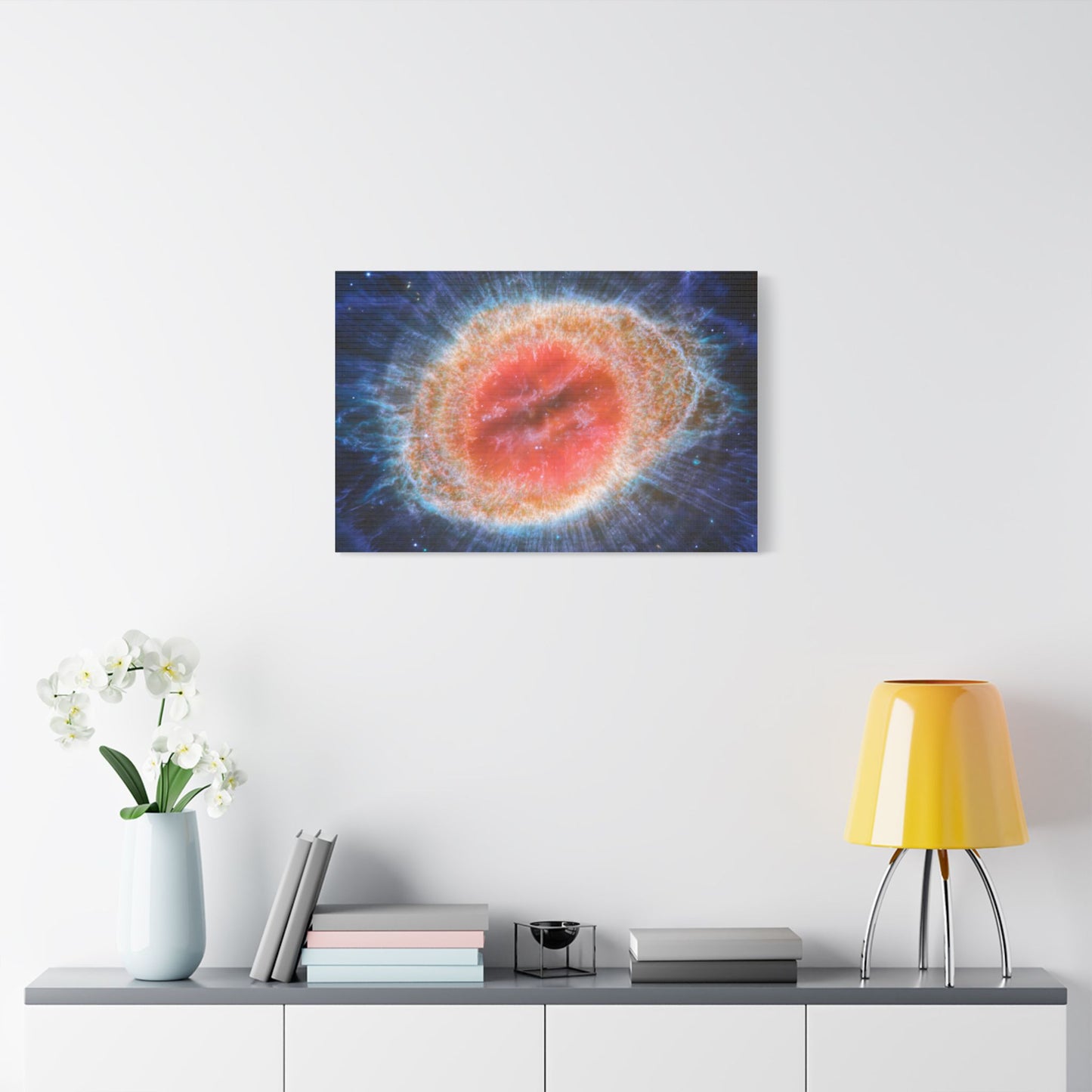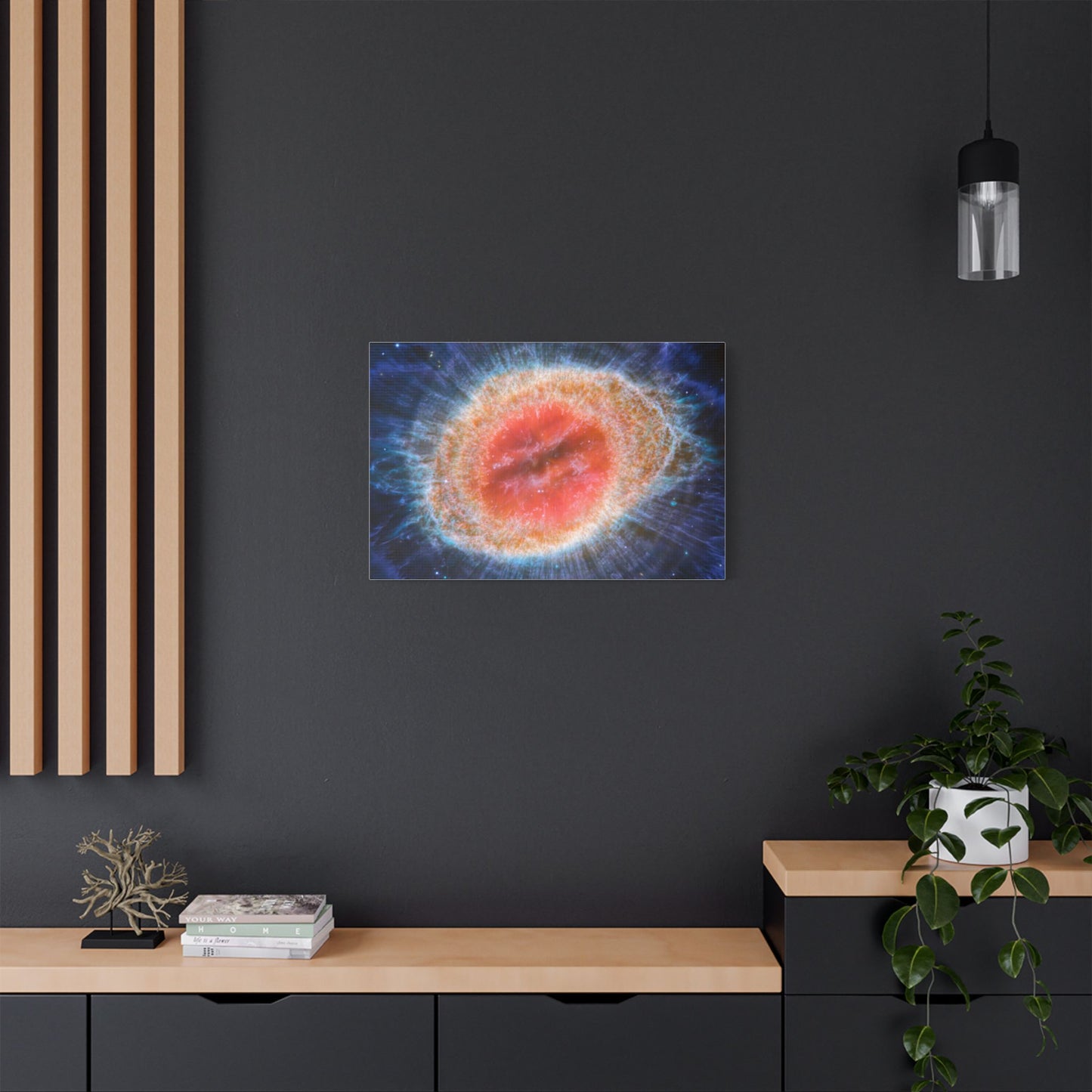Ring Nebula (MIRI image), Satin Canvas
Ring Nebula (MIRI image), Satin Canvas
Couldn't load pickup availability
Ring Nebula (MIRI image)
NASA’s James Webb Space Telescope has observed the well-known Ring Nebula with unprecedented detail. Formed by a star throwing off its outer layers as it runs out of fuel, the Ring Nebula is an archetypal planetary nebula. Also known as M57 and NGC 6720, it is relatively close to Earth at roughly 2,500 light-years away.
This new image provides unprecedented spatial resolution and spectral sensitivity. In particular, Webb’s MIRI (Mid-InfraRed Instrument) reveals particular details in the concentric features in the outer regions of the nebulae’s ring.
There are some 20,000 dense globules in the nebula, which are rich in molecular hydrogen. In contrast, the inner region shows very hot gas. The main shell contains a thin ring of enhanced emission from carbon-based molecules known as polycyclic aromatic hydrocarbons (PAHs). Roughly ten concentric arcs located just beyond the outer edge of the main ring. The arcs are thought to originate from the interaction of the central star with a low-mass companion orbiting at a distance comparable to that between the Earth and Pluto. In this way, nebulae like the Ring Nebula reveal a kind of astronomical archaeology, as astronomers study the nebula to learn about the star that created it.
| 10″ x 8″ (Horizontal) | 14″ x 11″ (Horizontal) | 16″ x 12″ (Horizontal) | 18″ x 12″ (Horizontal) | 20″ x 16″ (Horizontal) | 24″ x 16″ (Horizontal) | 24″ x 18″ (Horizontal) | 30″ x 20″ (Horizontal) | 30" x 24" (Horizontal) | 36″ x 24″ (Horizontal) | |
|---|---|---|---|---|---|---|---|---|---|---|
| Height, in | 10.00 | 14.00 | 16.00 | 18.00 | 20.00 | 24.00 | 24.00 | 30.00 | 30.00 | 36.00 |
| Width, in | 8.00 | 11.00 | 12.00 | 12.00 | 16.00 | 16.00 | 18.00 | 20.00 | 24.00 | 24.00 |
| Depth, in | 1.50 | 1.50 | 1.50 | 1.50 | 1.50 | 1.50 | 1.50 | 1.50 | 1.85 | 1.50 |
.: 100% Polyester
.: Wooden inner frame
.: Metallic mounts on the back of canvas
.: For indoor use
2-3 days delivery
Share
